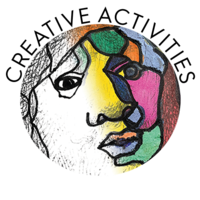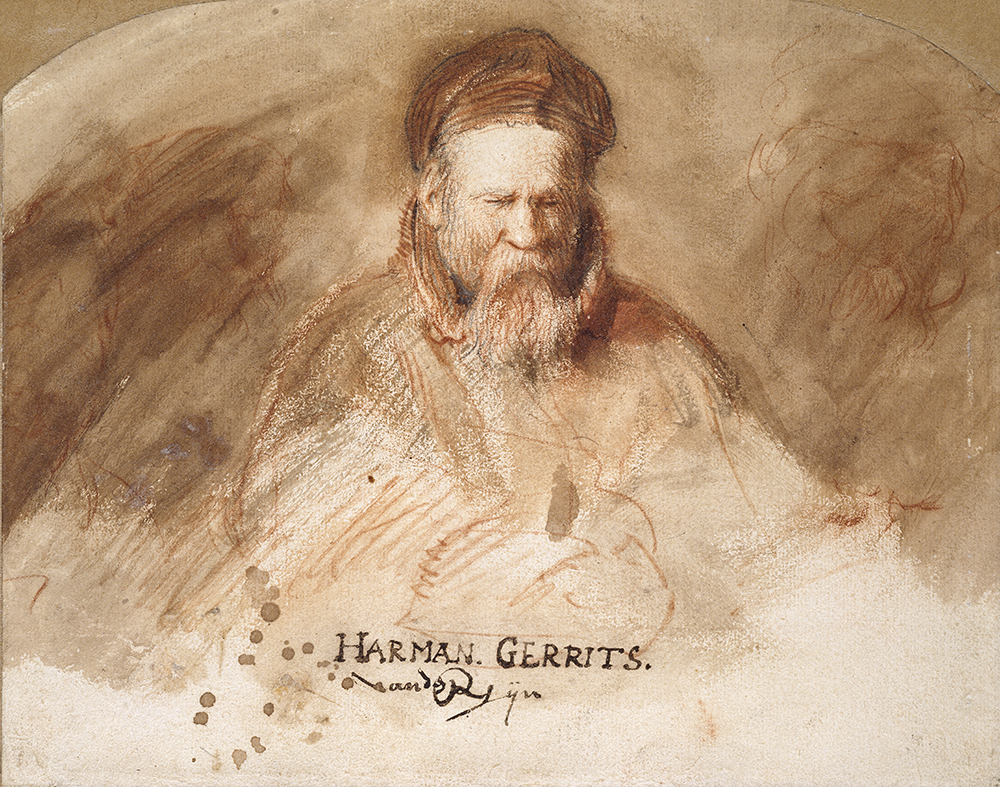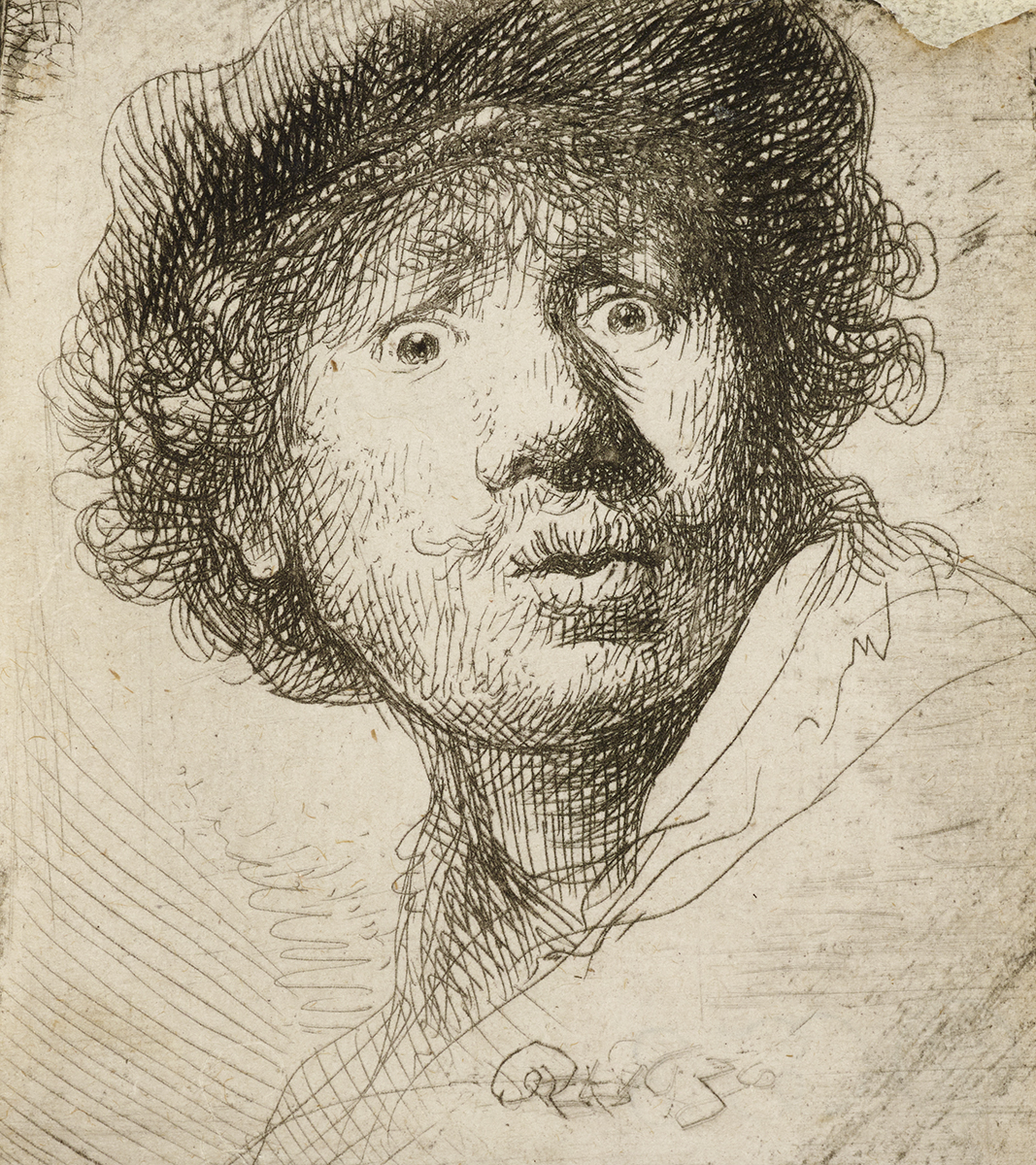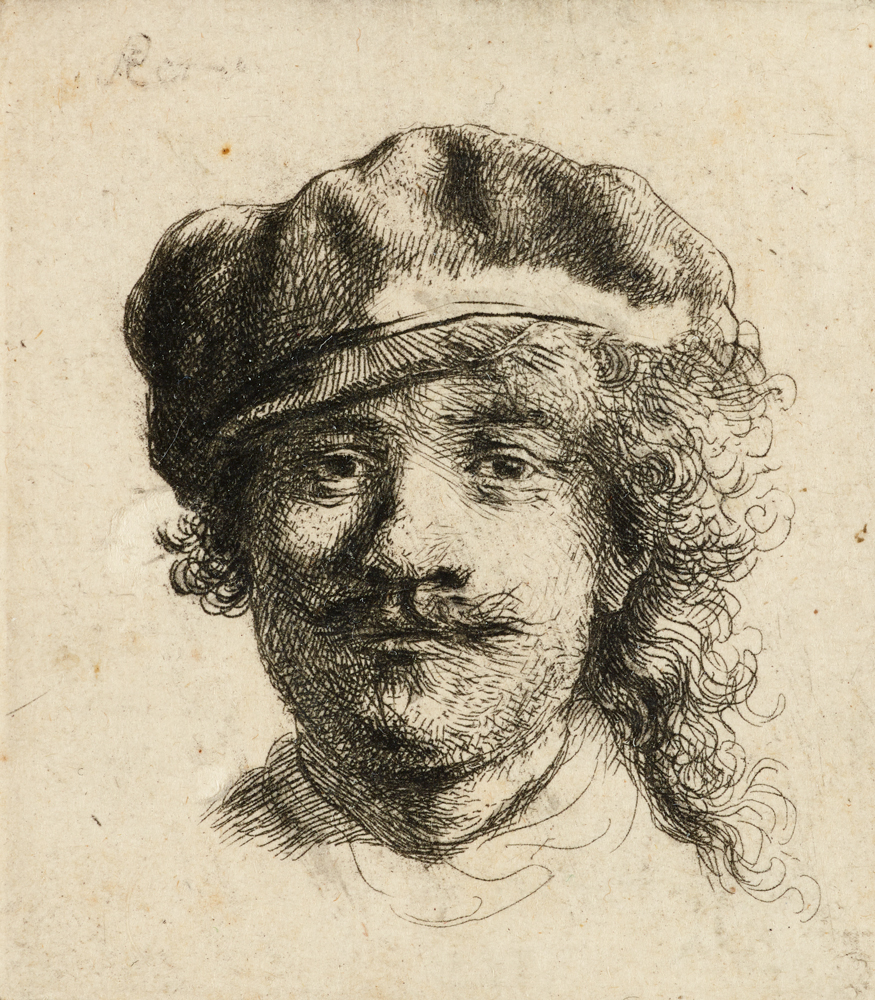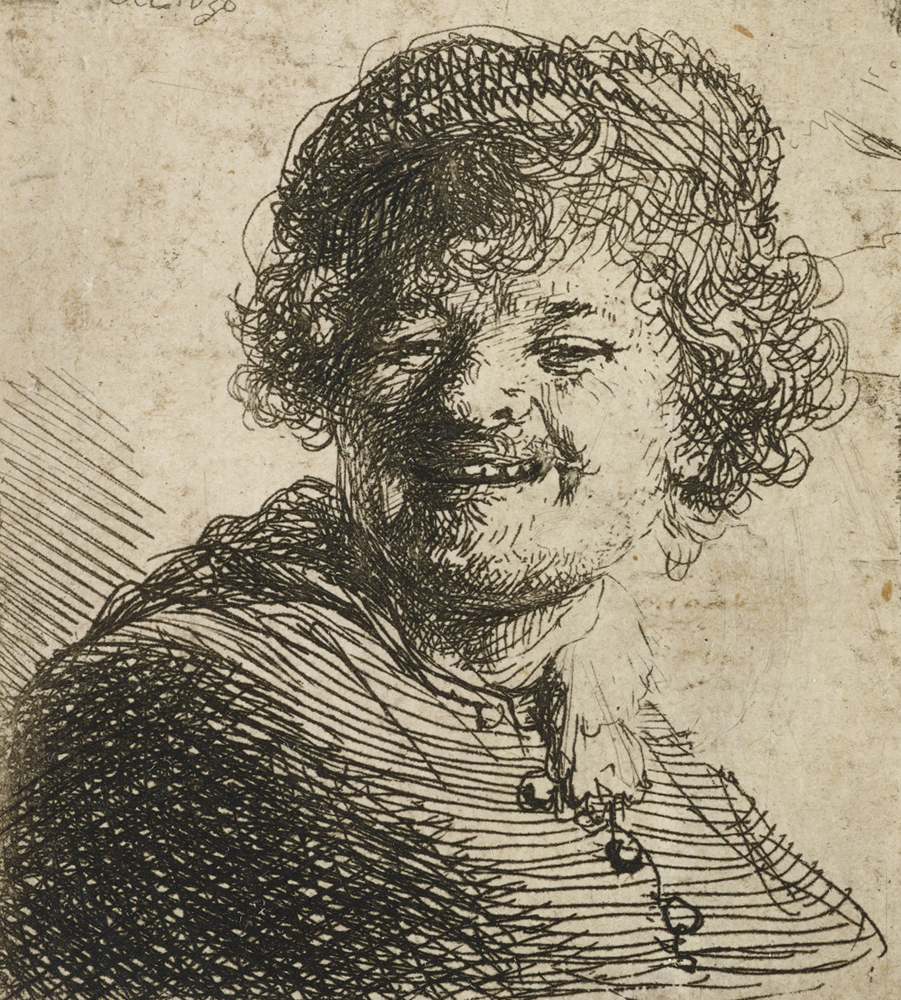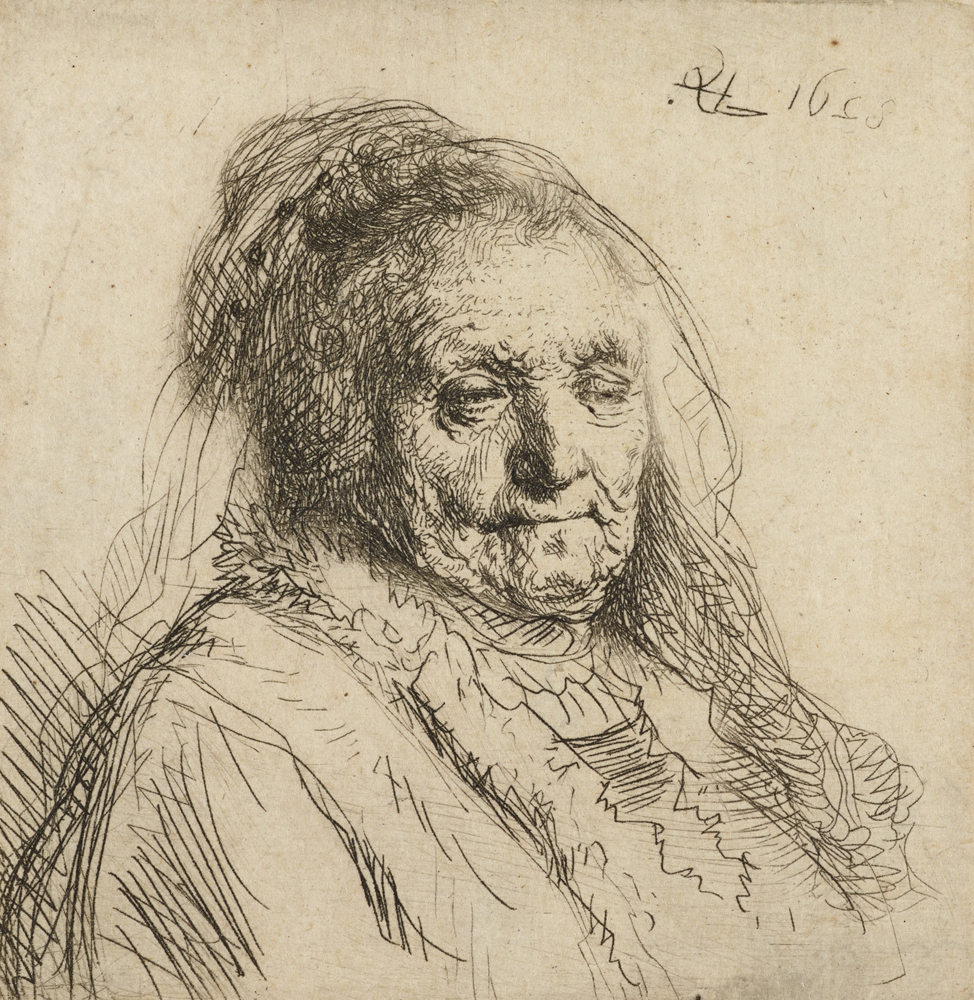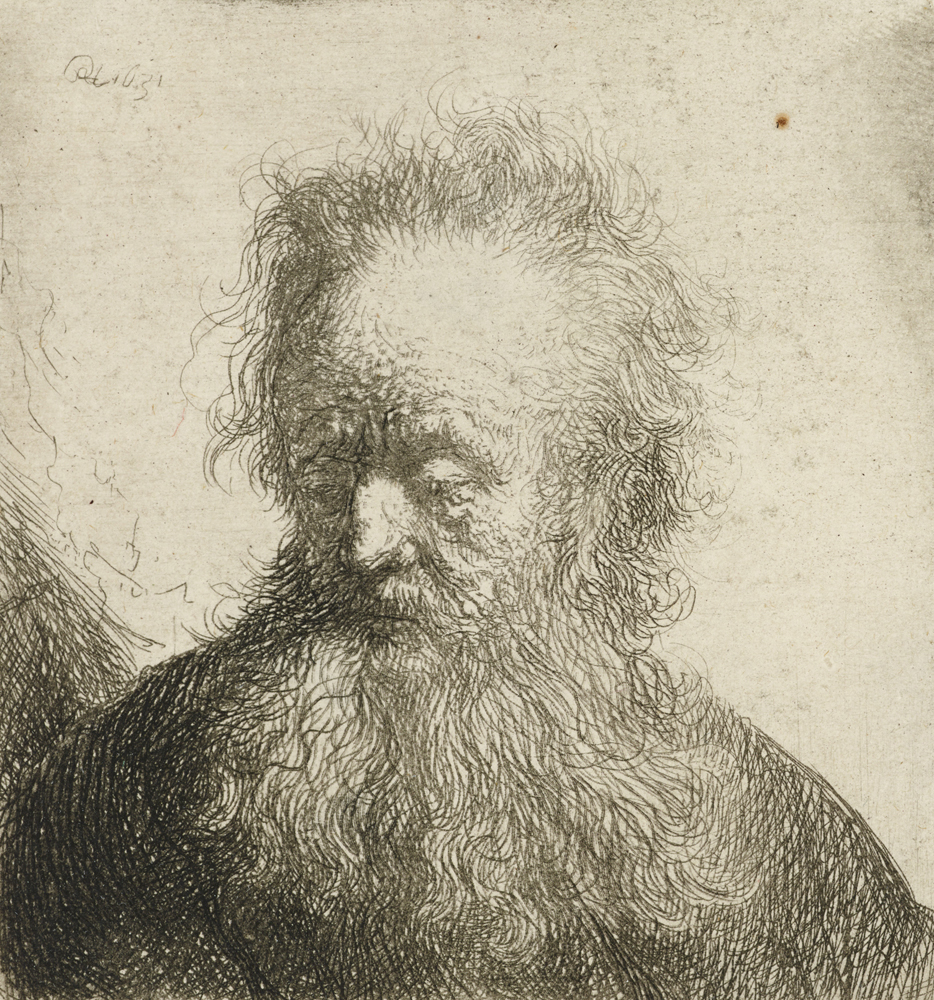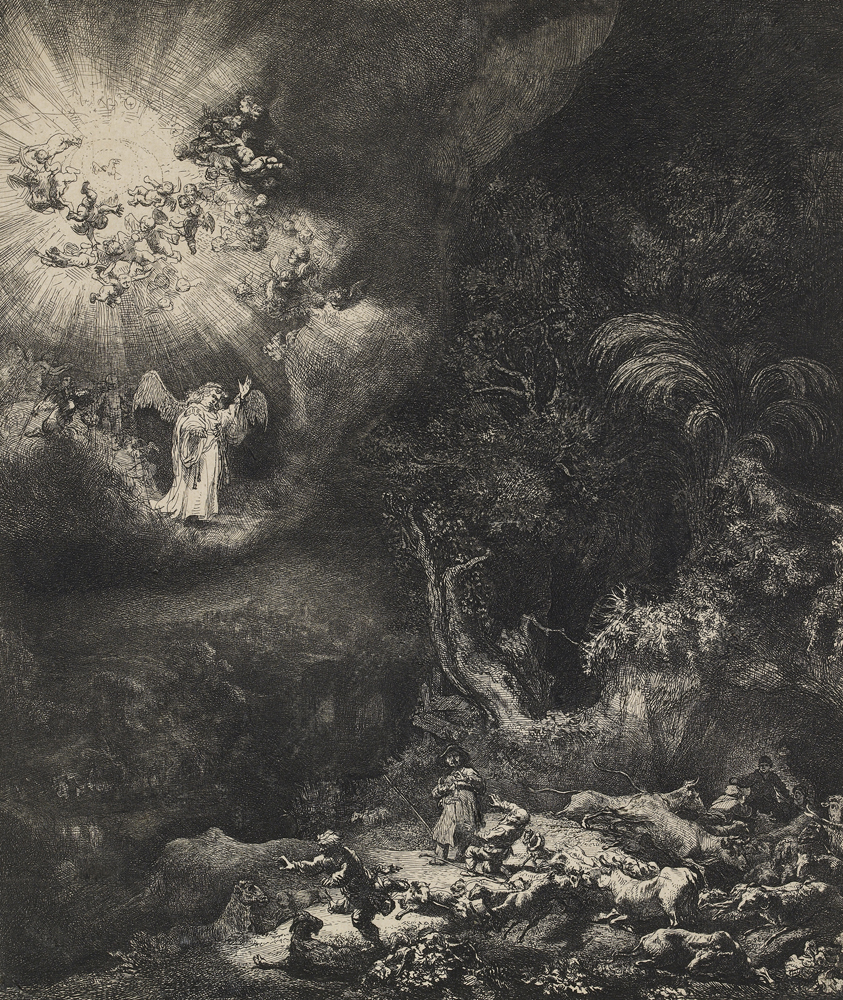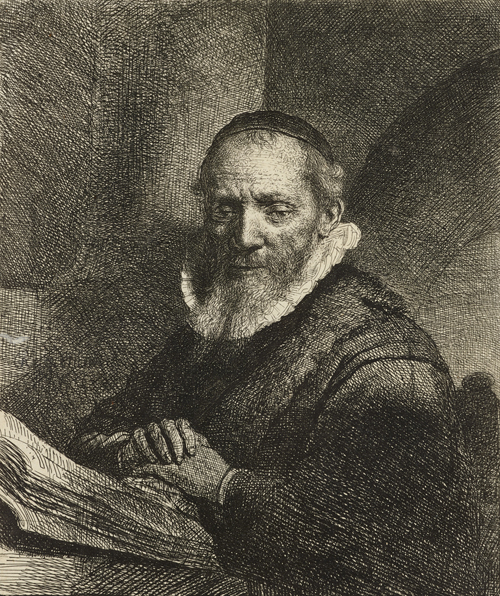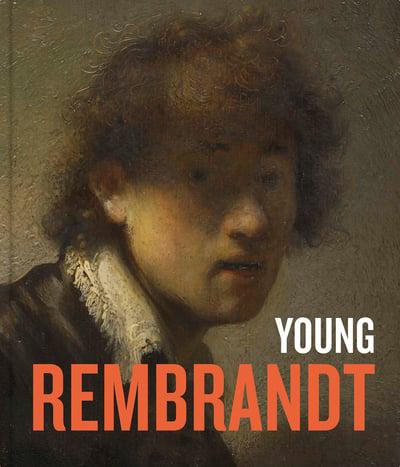YOUNG REMBRANDT – ONLINE EXHIBITION
This major exhibition was open at the Ashmolean until 1 November 2020
YOUNG REMBRANDT
Enjoy our Young Rembrandt exhibition from home.
Explore the exhibition section by section, and join curator An Van Camp for an introduction.
https://www.youtube.com/embed/FNn8r-mhZpc?rel=0&cc_load_policy=1
The Young Rembrandt exhibition charts the astonishing transformation of the Dutch master Rembrandt. Spanning the years 1624 to 1634, it traces how a young and unremarkable artist from Leiden became the superstar of 17th-century Amsterdam and one of the greatest artists of all time.
Rembrandt Harmensz. van Rijn, simply known as Rembrandt, was born in 1606. There was nothing particularly promising about his work when he qualified as a painter around 1624/5. But during the subsequent decade – working in painting, printmaking and drawing – he was relentless in his efforts to improve. By looking over Rembrandt’s shoulder as he learns from his mistakes and as he experiments with new techniques and subjects, we can follow the steps by which he established himself as an extraordinary talent.
To help understand this metamorphosis, works by key figures in Rembrandt’s development are shown alongside his own. The artist’s searching self-portraits punctuate this fascinating story.
Artist Dionne Freeman has also designed some Young Rembrandt creative activities for you to use at home!
REMBRANDT AND LEIDEN
Image: Rembrandt, Rembrandt Laughing, c. 1628
© J Paul Getty Museum, Los Angeles
Leiden, Rembrandt’s birthplace, was a thriving economic centre as well as a haven of religious tolerance. Only second in size to Amsterdam, which lay around 30 miles to the north, it also boasted the oldest university in the Dutch Republic.
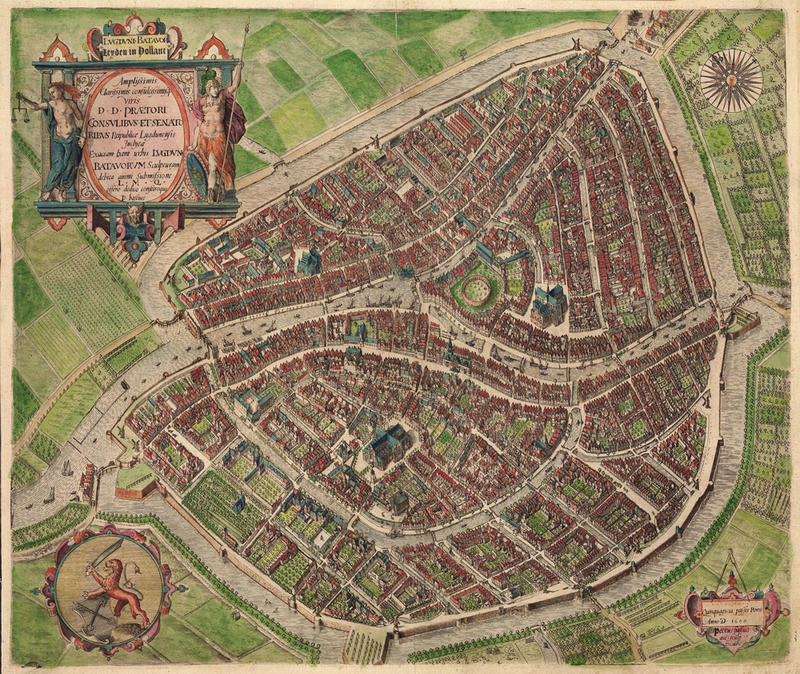
Map of Leiden adapted from Pieter Bast, Lugduni, 1600
Rembrandt’s full name was Rembrandt Harmensz. van Rijn. ‘Harmensz.’ was his patronym, meaning ‘son of Harmen’, while his surname ‘van Rijn’ referred to an old branch of the River Rhine located near the family’s windmill. Rembrandt’s family were prosperous millers to the local brewing industry, but as the youngest son Rembrandt was not required to join the family firm. After receiving an education at both Leiden’s Latin School and University, he embarked on becoming an artist at around the age of 16. Rembrandt first completed three years of apprenticeship to a local painter in Leiden, Jacob van Swanenburg. These were followed by a brief, six-month stint in the great artistic centre of Amsterdam around 1624. His master there was Pieter Lastman who had studied in Italy and who had become popular for his dramatic storytelling and use of expressive figures.
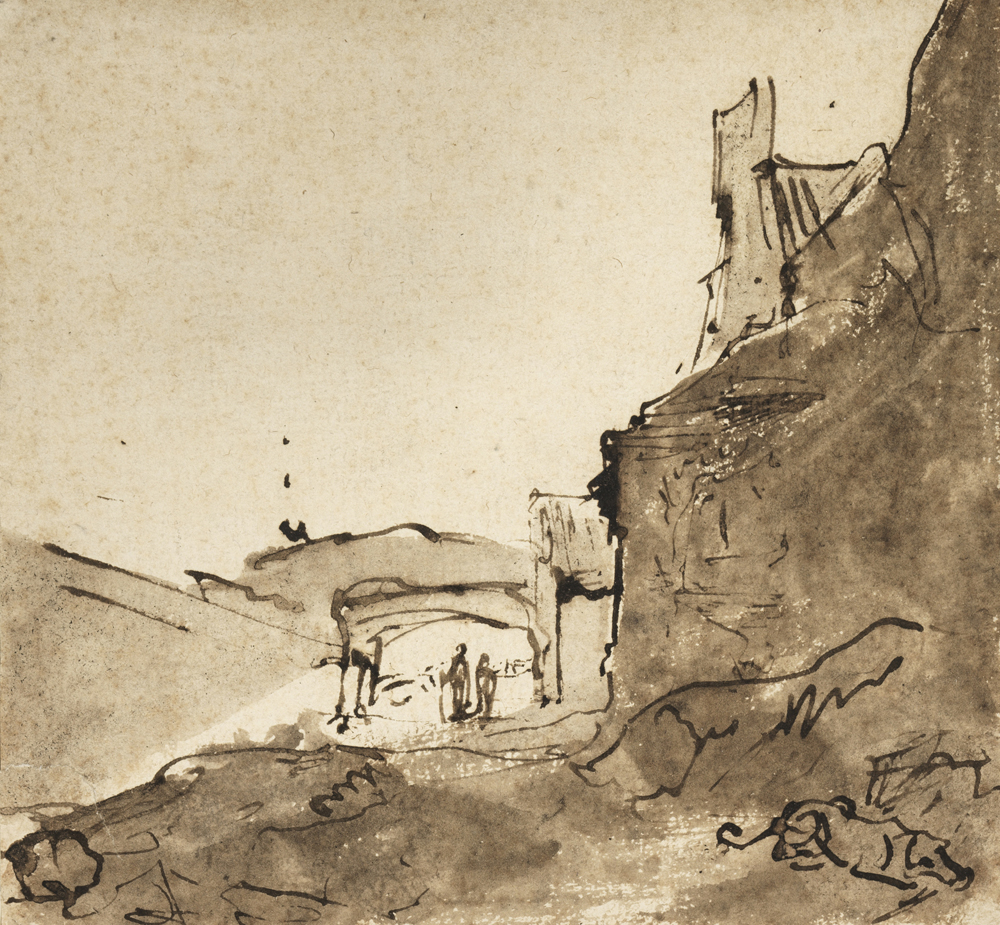
Rembrandt, Outskirts of a town with walls and a doorway (view of Leiden), c. 1627–9 © Fitzwilliam Museum, University of Cambridge
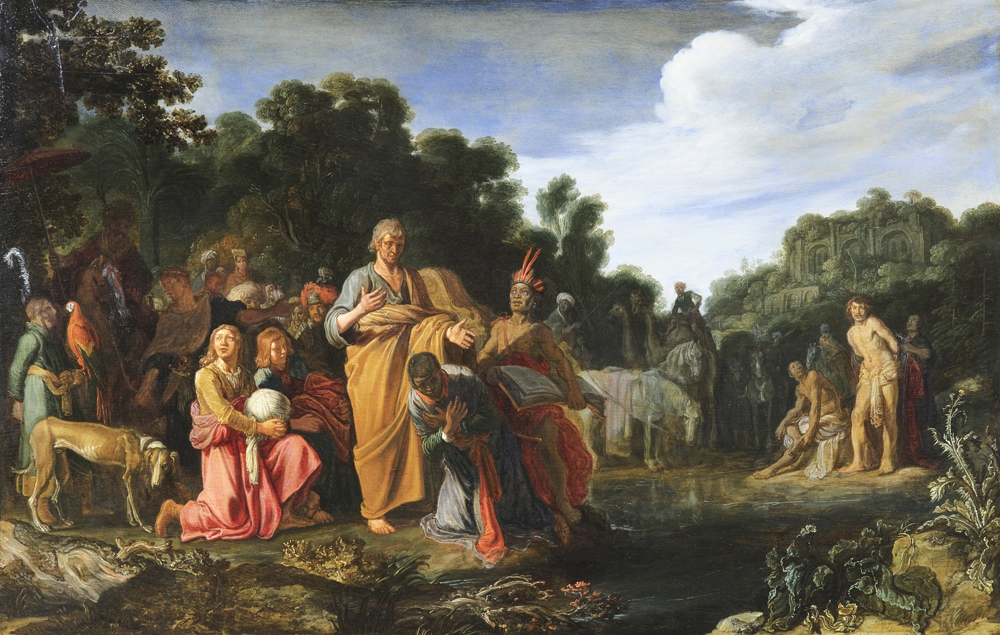
Pieter Lastman, The Baptism of the Eunuch, c. 1615–20 © Fondation Custodia, Collection Frits Lugt, Paris
A HESITANT START
On Rembrandt’s return to Leiden to set up his own workshop in about 1625, the impact of Lastman’s teaching can be seen in the young artist’s paintings – particularly in his bold use of colour. Some of these early paintings by Rembrandt are awkward and clumsy and reveal that he still had much to learn about perspective and anatomy.
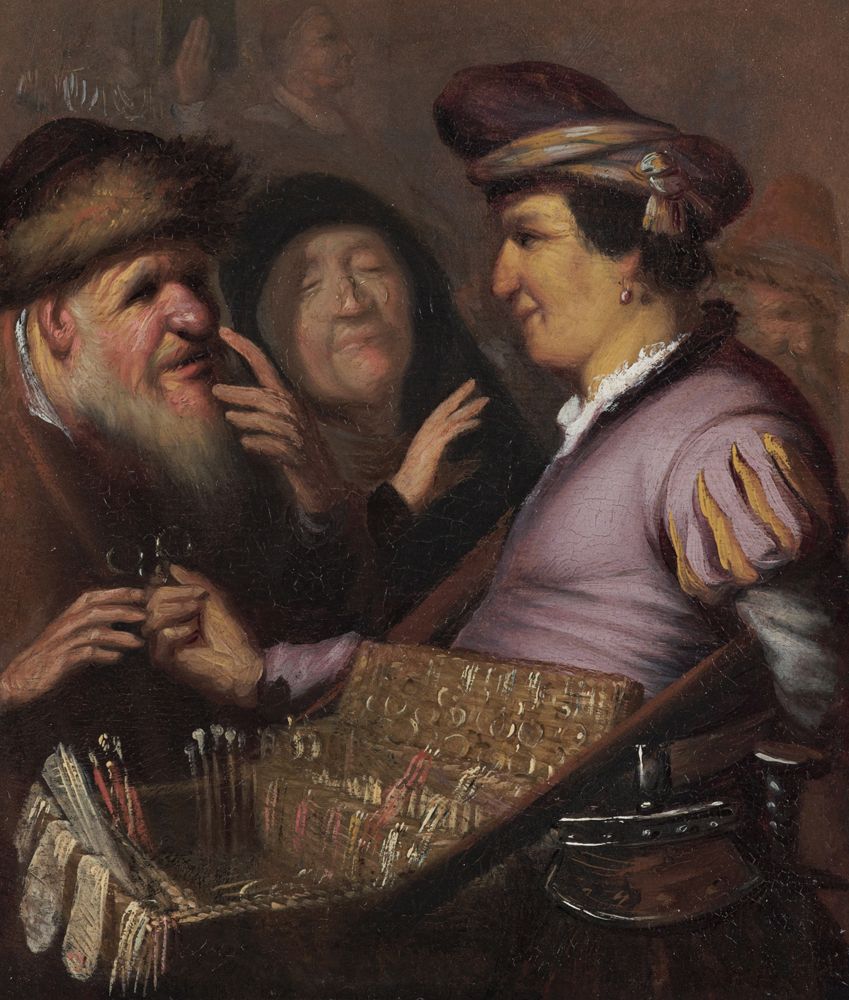
Rembrandt, The Spectacles Seller (Allegory of Sight), c. 1624 © Museum de Lakenhal, Leiden
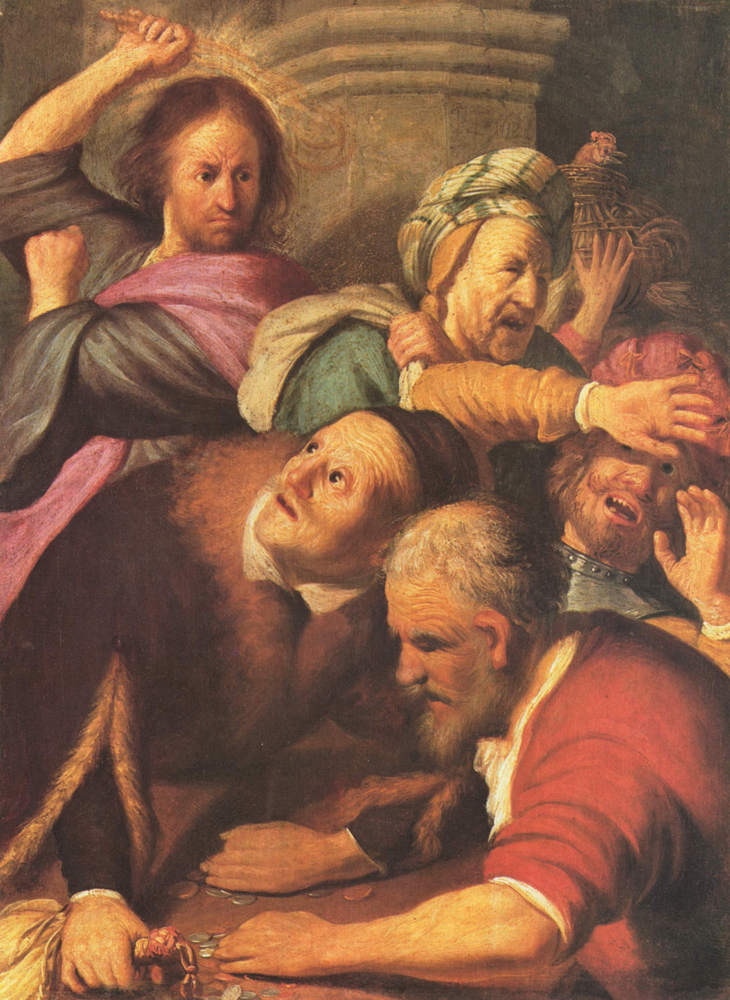
Rembrandt, Christ Driving the Money Changers from the Temple, 1626 © The Pushkin State Museum of Fine Arts, Moscow
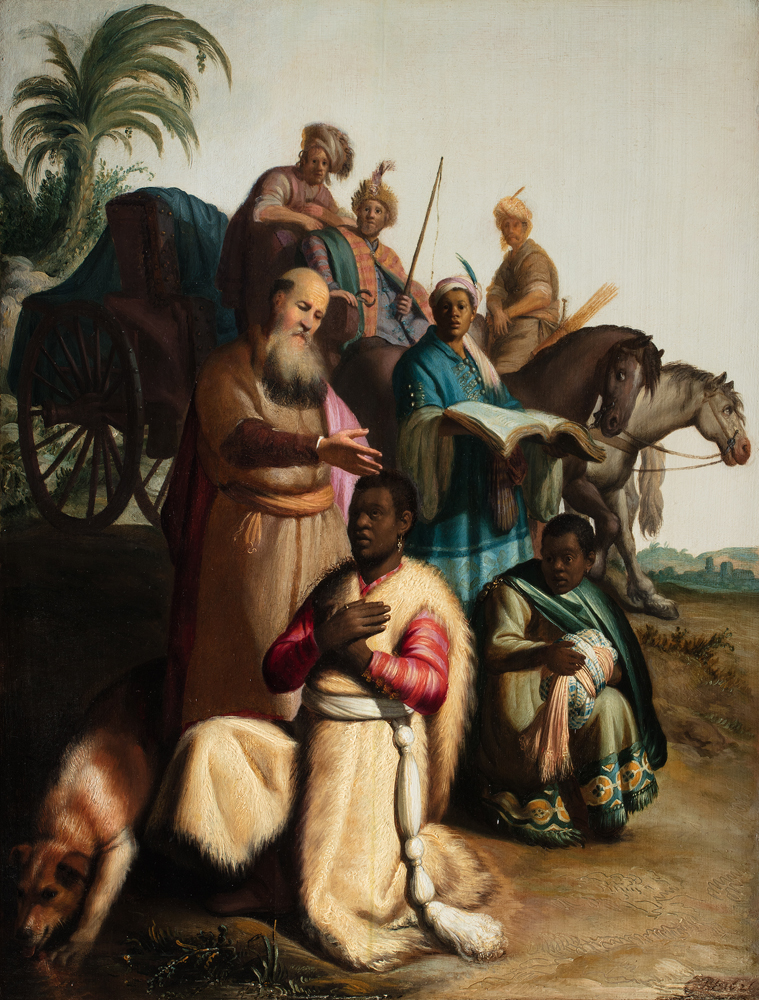
Rembrandt, The Baptism of the Eunuch, 1626 © Museum Catharijneconvent, Utrecht
However, his talent for depicting scenes full of emotional charge is already firmly in evidence.
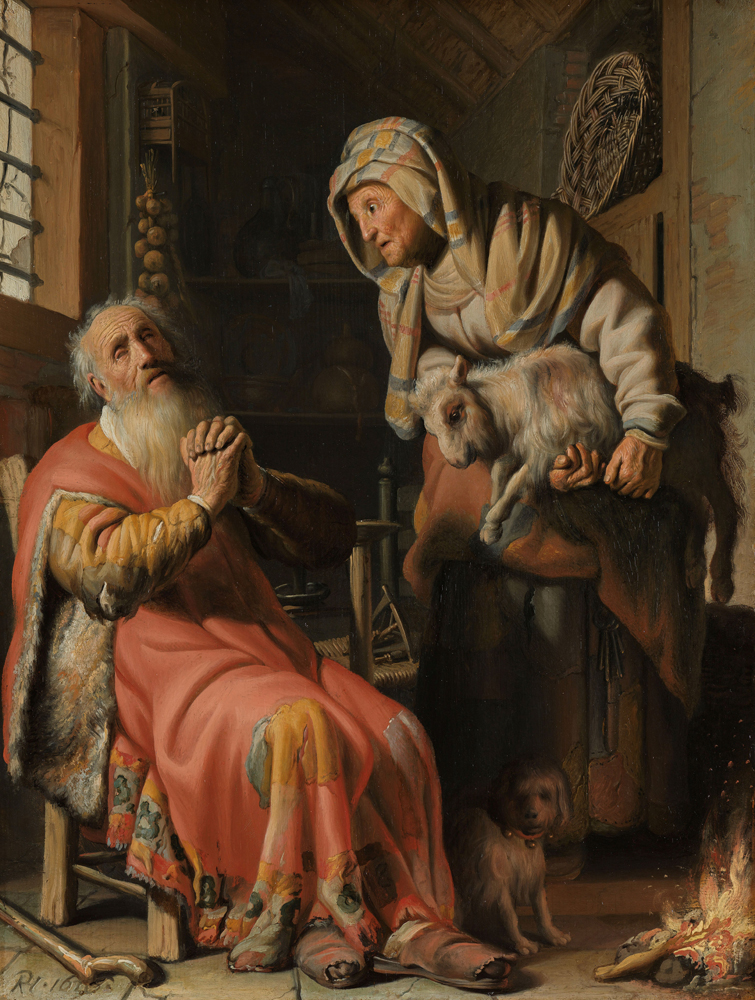
Rembrandt, Tobit Accusing Anna of Stealing the Kid, 1626 © Rijksmuseum, Amsterdam
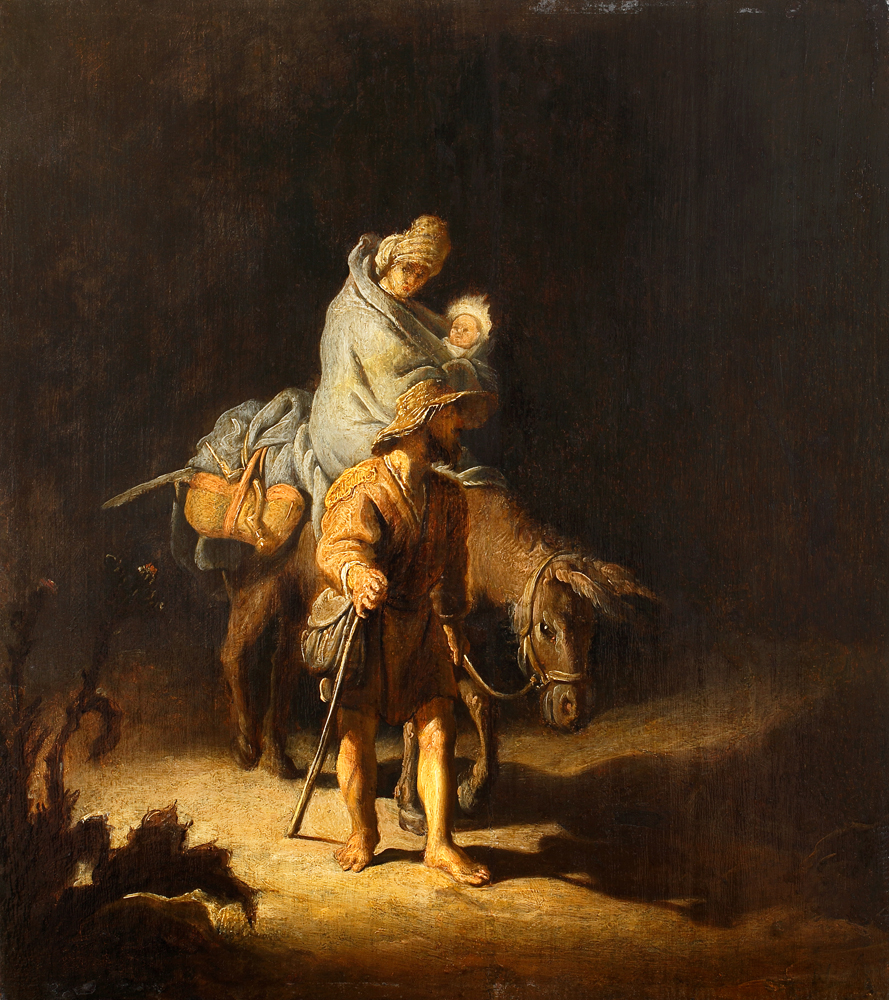
Rembrandt, The Flight into Egypt, 1627 © Musée des Beaux-Arts, Tours
LOOKING OVER REMBRANDT’S SHOULDER
As with his paintings, Rembrandt‘s future brilliance was not always apparent in his first attempts at printmaking. Wobbly lines, over- or underworked areas, awkward compositions, unfinished stages and blemishes are all in evidence.
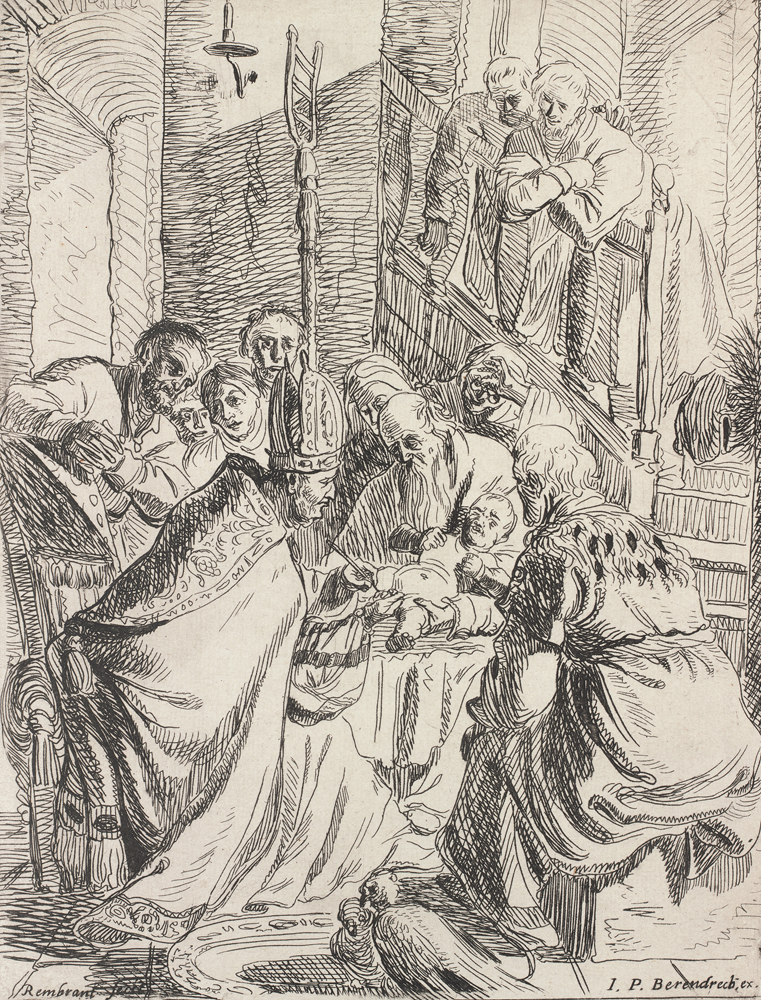
Rembrandt, The Circumcision, c. 1625 © Museum Het Rembrandthuis, Amsterdam
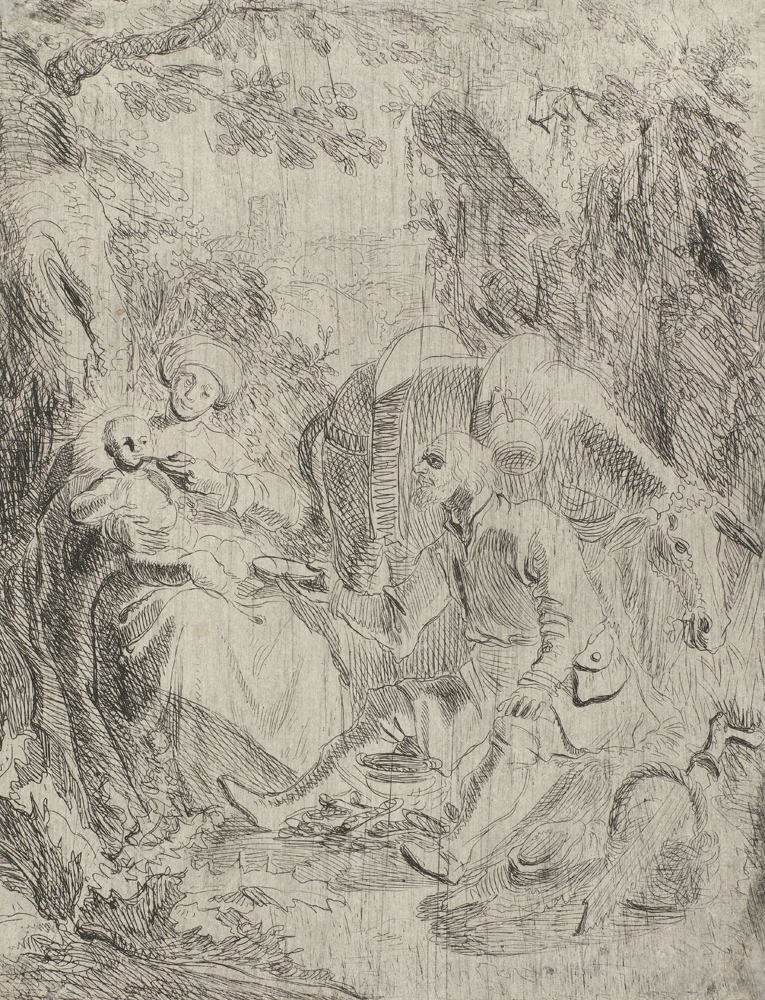
Rembrandt, The Rest on the Flight into Egypt, c. 1626 © Rijksmuseum, Amsterdam
Yet these imperfect prints also reveal Rembrandt’s willingness to learn through trial and error and his fearless attitude to experimentation. Through these early prints we witness his phenomenal talent taking shape.
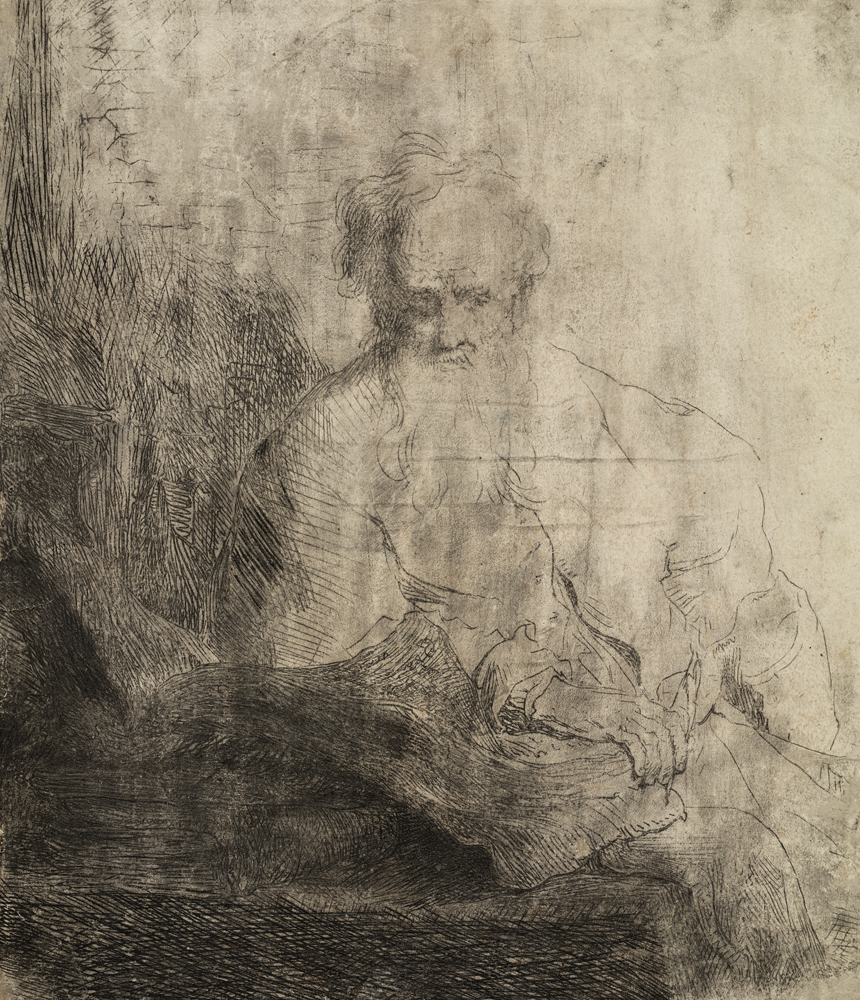
Rembrandt, The apostle Saint Paul in meditation, c. 1629 © Teylers Museum, Haarlem
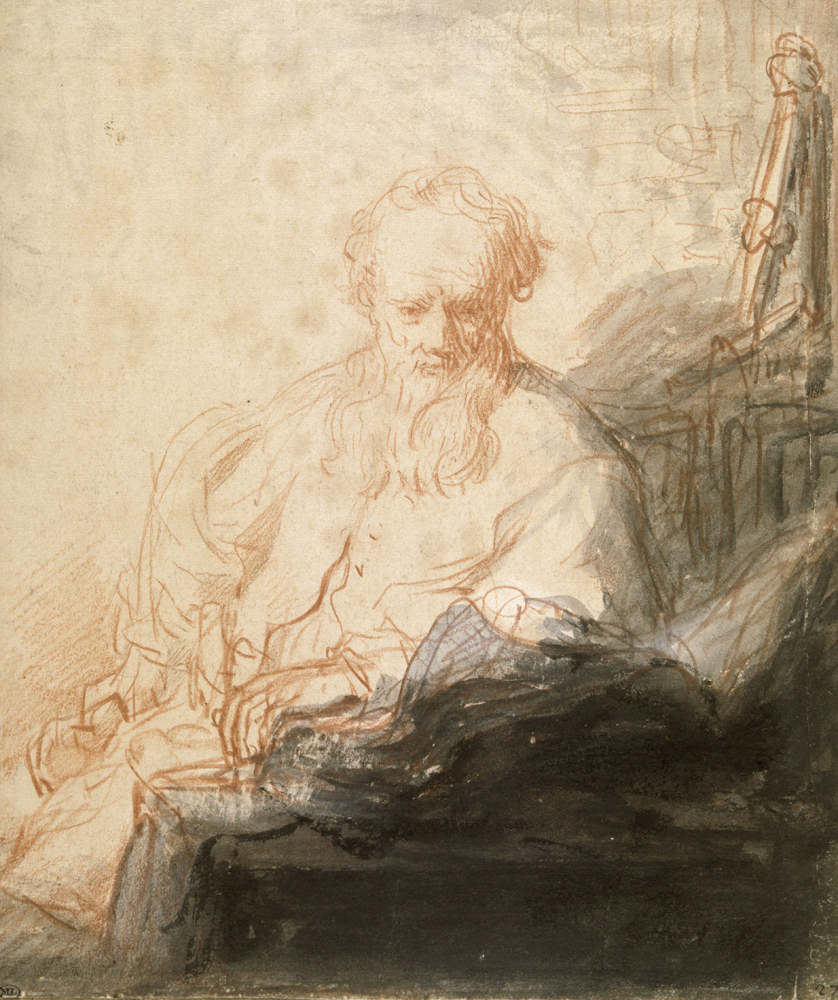
Rembrandt, The apostle Saint Paul in meditation, c. 1629 © Musée du Louvre, Paris
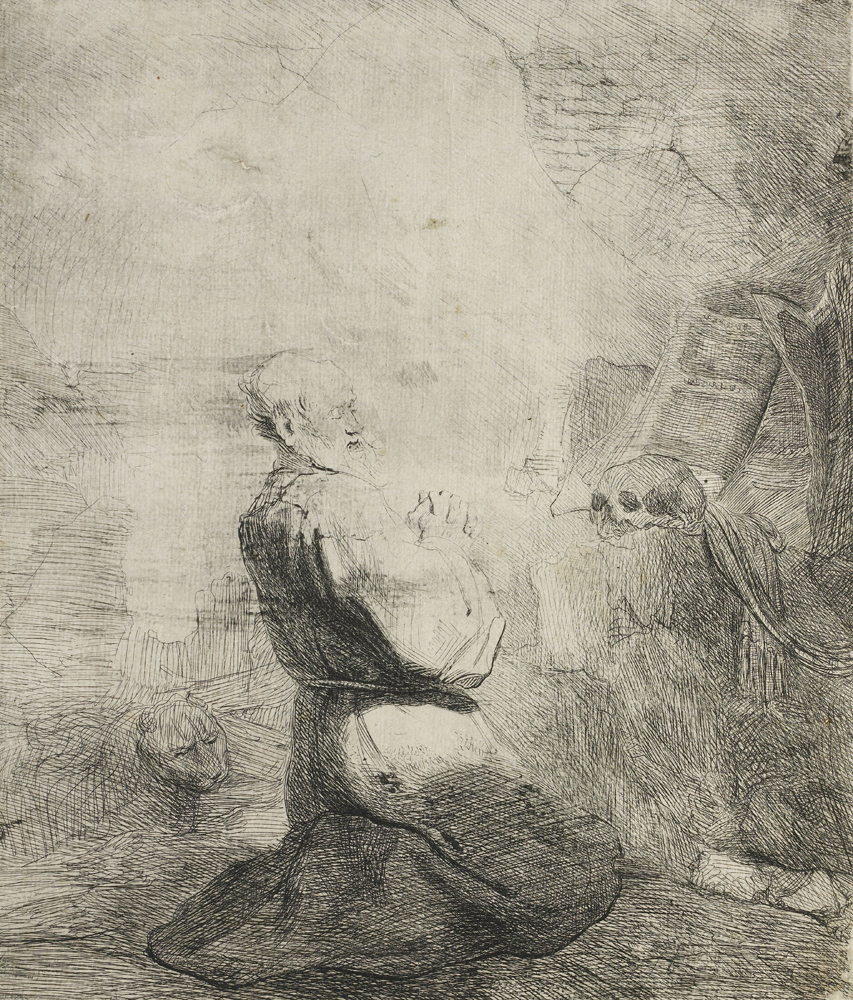
Rembrandt, Saint Jerome kneeling, c. 1628 © Rijksmuseum, Amsterdam
Here is a video demonstrating Rembrandt’s etching techniques.
https://www.youtube.com/embed/hzFYMV12xvw
REMBRANDT AND HIS FAMILY
When Rembrandt returned to Leiden to establish his first workshop as an independent artist, he moved back in with his family. Like many young artists embarking on their career, Rembrandt used himself and the members of his family as his first models.
These were readily available subjects, willing to pose free of charge. In his paintings, prints and drawings Rembrandt made various studies of his elderly parents.
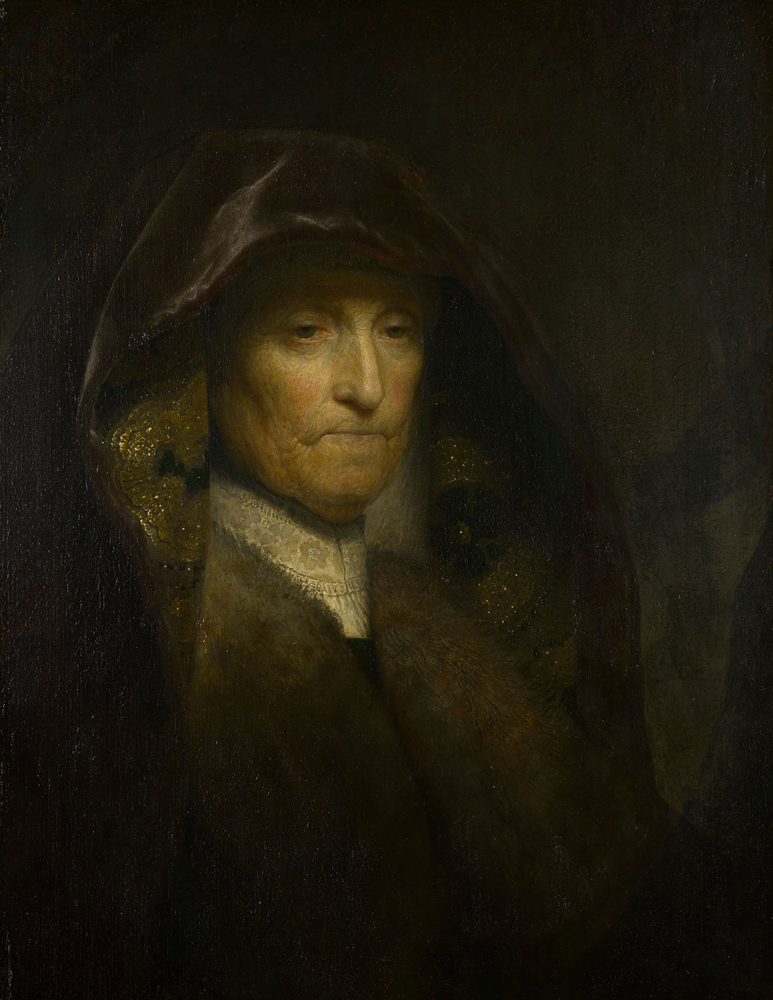
Rembrandt, An Old Woman, called ‘The Artist’s Mother’, c. 1627–9 - The Royal Collection Trust / © HM Queen Elizabeth II 2020
REMBRANDT AND LIEVENS IN LEIDEN
Jan Lievens, Portrait of Rembrandt van Rijn, c. 1628
© Rijksmuseum, Amsterdam
After Rembrandt moved back to Leiden, he also rekindled his friendship with another young artist from the town, Jan Lievens. The two worked closely together, influencing each other and exploring the same subjects to such an extent that it is thought they may have shared a workshop.
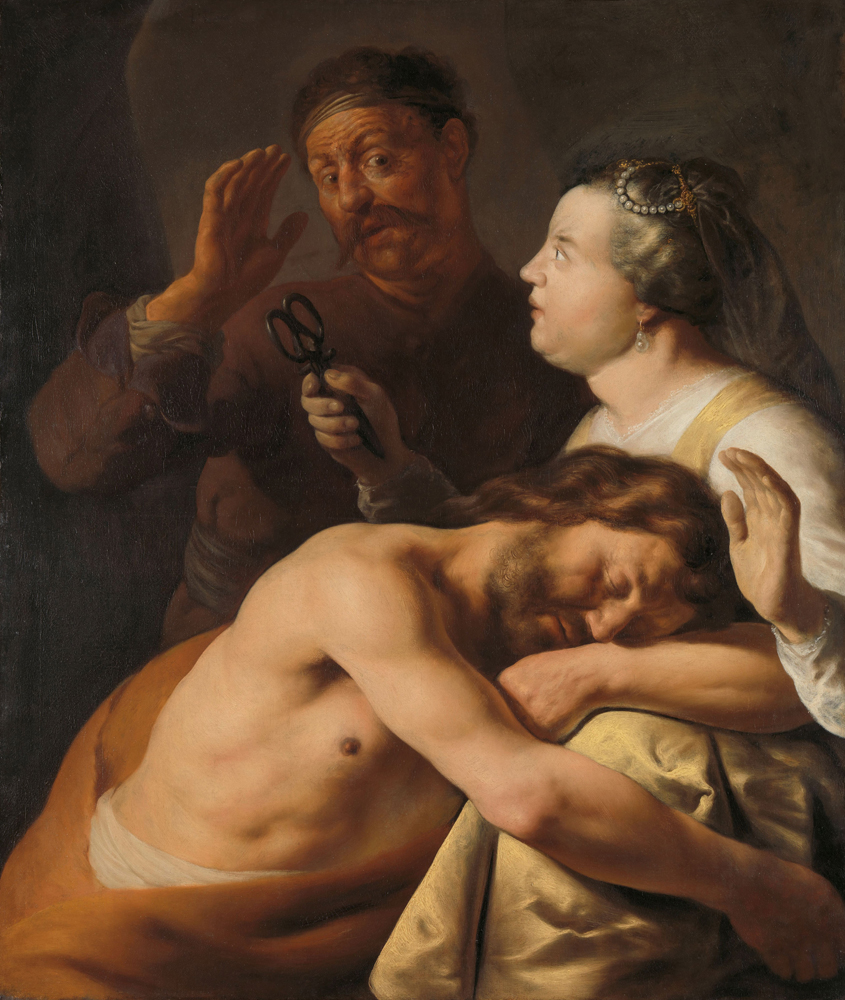
Jan Lievens, Samson and Delilah, c. 1628–9 © Rijksmuseum, Amsterdam
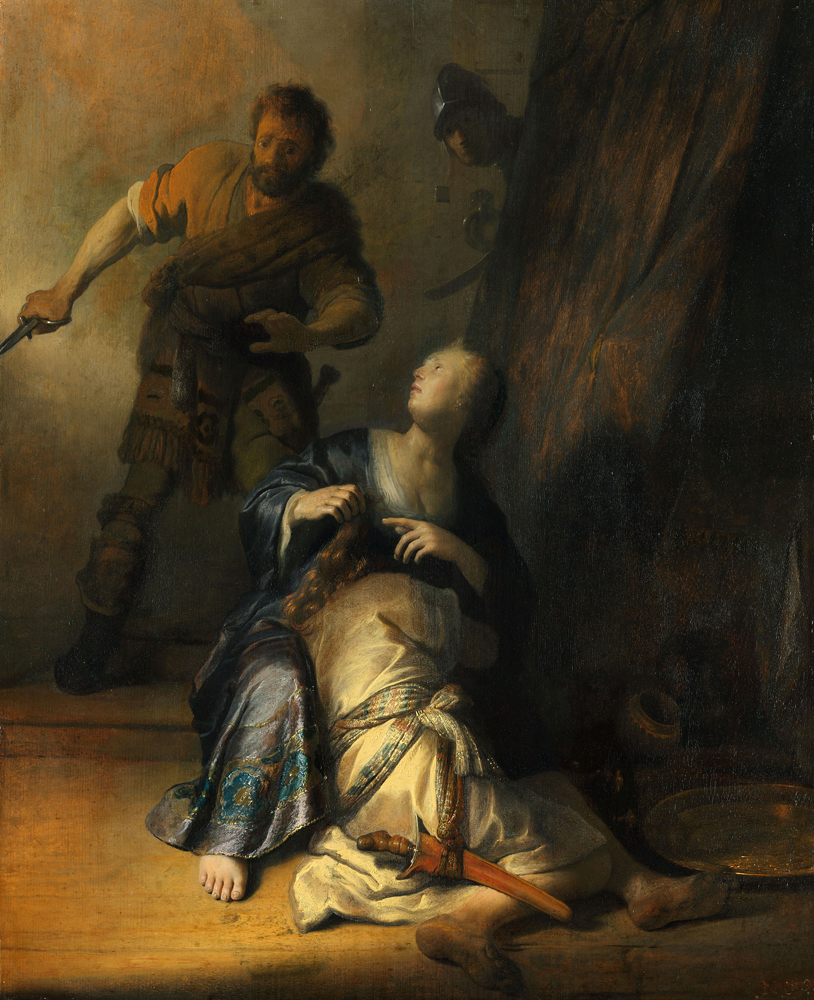
Rembrandt, Samson and Delilah, 1628 © Gemäldegalerie, Staatliche Museen zu Berlin
In 1628–9 their friendship was recorded by the art patron Constantijn Huygens, Secretary to the Prince of Orange, Frederick Henry. Describing the two young men as ‘still beardless’, he gave particular praise to the painting 'Judas Repentant' which Rembrandt was working on at the time.
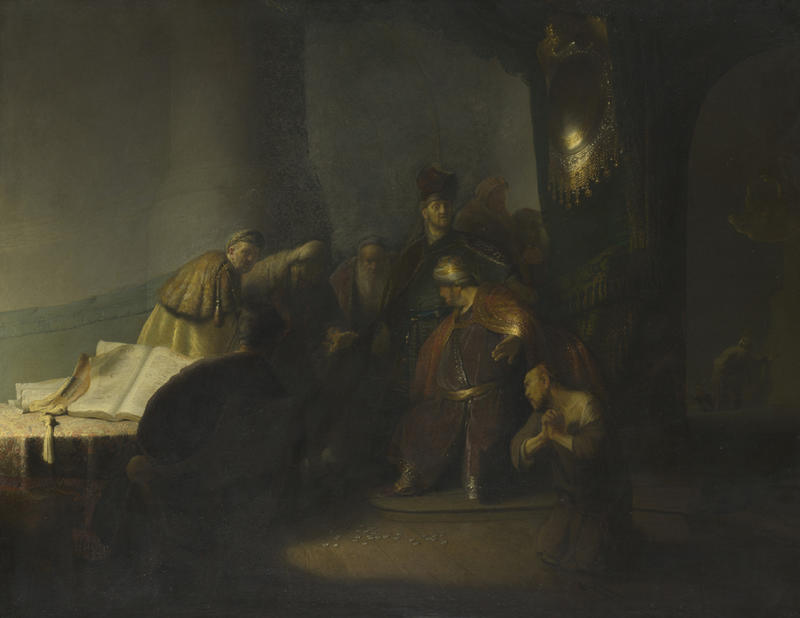
Rembrandt, Judas Repentant Returning the Pieces of Silver, 1629 © Private collection
AMBITION AND INNOVATION
Rembrandt, Self-portrait in a soft hat and a patterned cloak, 1631
© British Museum, London
The visit paid to Rembrandt and Lievens by Constantijn Huygens had far-reaching consequences. Huygens became an enthusiastic collector of both artists and from 1630 onwards other court officials in The Hague were placing commissions. Alongside these works, which included portraits and religious subjects, Rembrandt also started to produce large-scale prints based on some of his completed paintings.
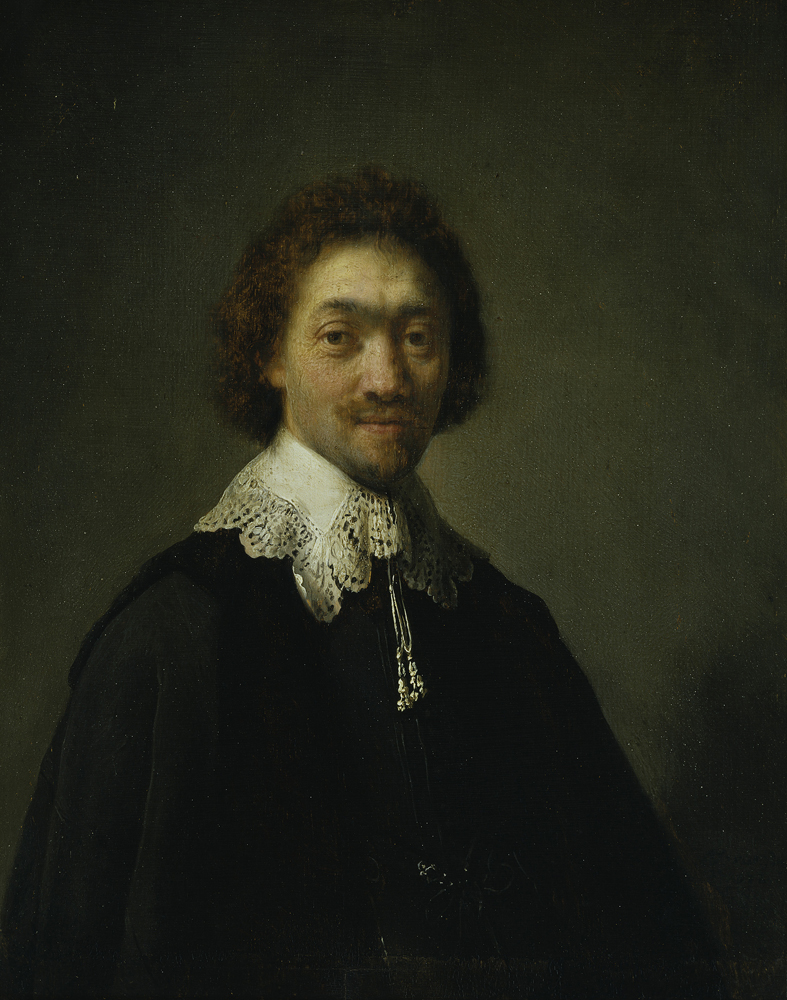
Rembrandt, Portrait of Maurits Huygens, 1632 © Hamburger Kunsthalle
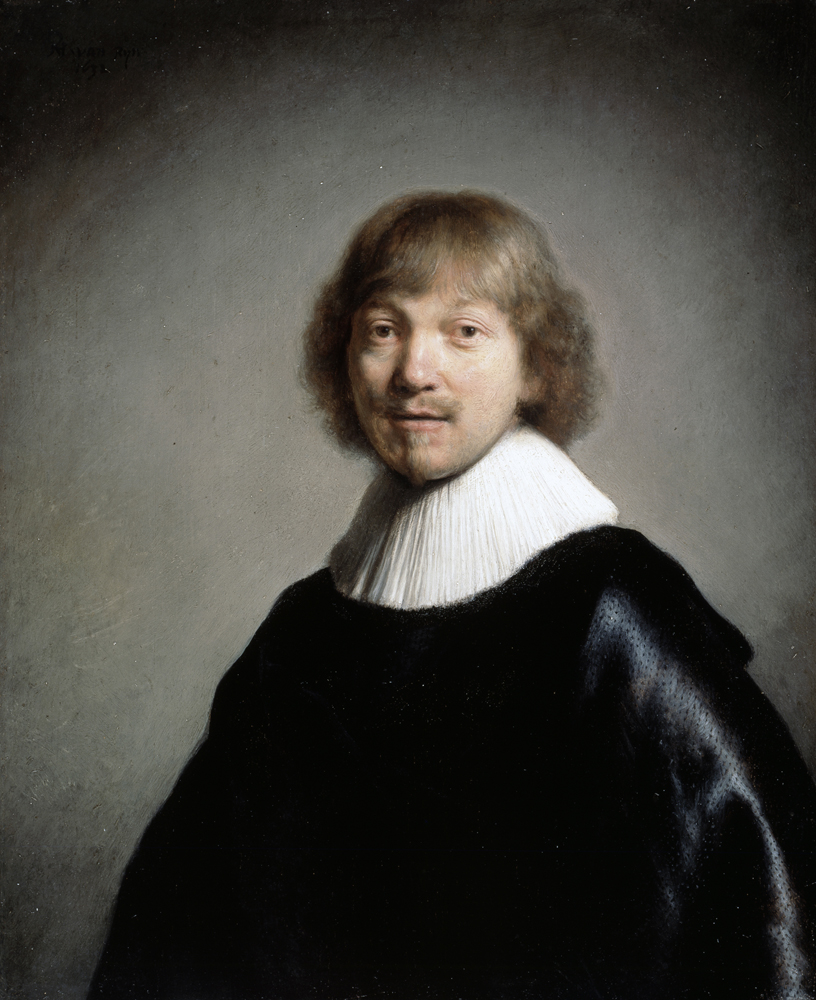
Rembrandt, Portrait of Jacques de Gheyn III, 1632 © Dulwich Picture Gallery, London
Already in 1629 Charles I’s special envoy, Robert Kerr, had purchased two Rembrandt paintings which were presented to the king after Kerr’s return to England.
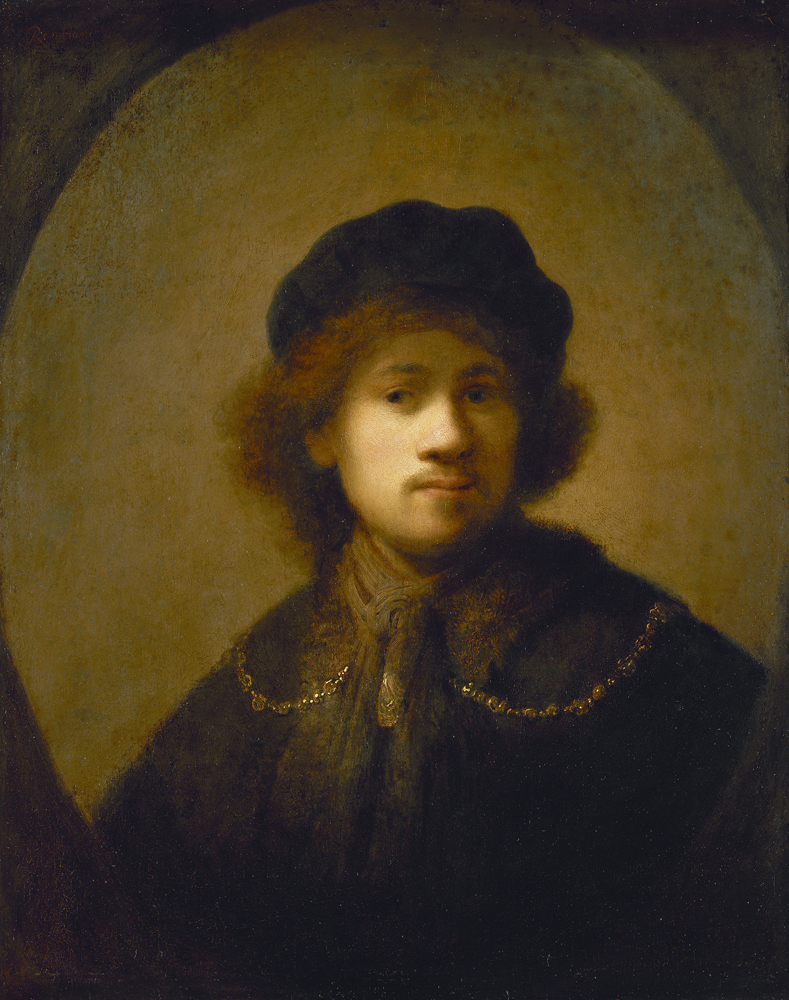
Rembrandt, Portrait of the Artist as a Young Man, c. 1629–31 © Walker Art Gallery, National Museums, Liverpool

Rembrandt, An Old Woman, called ‘The Artist’s Mother’, c. 1627–9 - The Royal Collection Trust / © HM Queen Elizabeth II 2020
Pictures also entered the collection of Frederick Henry and his wife, Amalia van Solms. The greatest honour of all coming when Rembrandt was chosen over Lievens to paint a major series depicting the Passion of Christ.
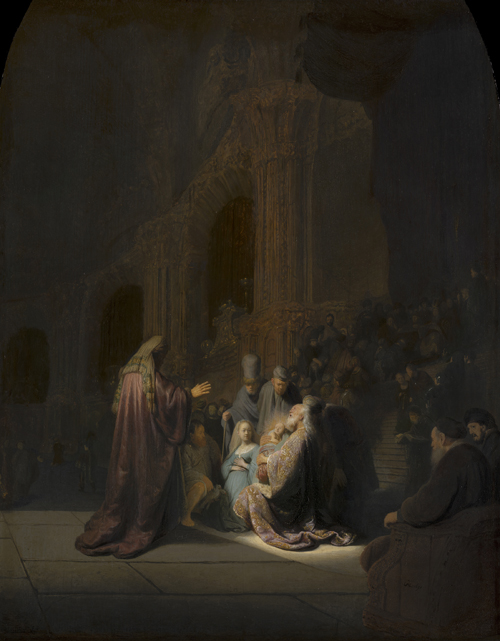
Rembrandt, Simeon in the Temple (Simeon's Song of Praise), 1631 © Mauritshuis, The Hague
REMBRANDT AND VAN VLIET
In addition to making his own prints, Rembrandt collaborated with another young artist from Leiden, Jan Gillisz. van Vliet – a professional printmaker. Van Vliet not only made small etchings in Rembrandt’s workshop, signed with Rembrandt’s monogram, but between 1631 and 1635 he also created larger prints that reproduced some of the artist’s paintings. Following in the footsteps of famous contemporaries like the Flemish master Peter Paul Rubens, Rembrandt used these reproductions to reach a wider audience, build his reputation and generate additional income.
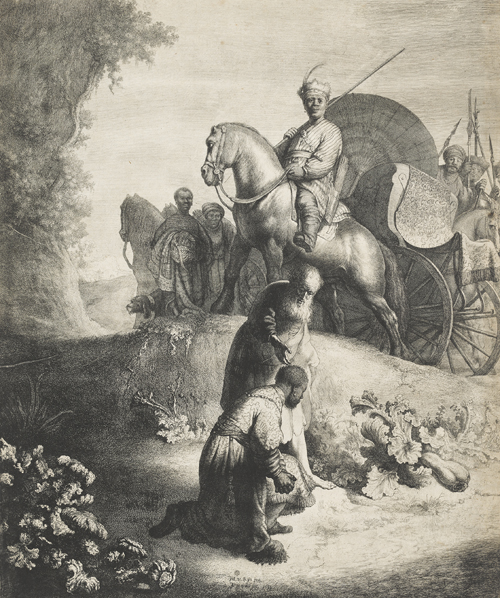
Jan van Vliet after Rembrandt, The Baptism of the Eunuch, 1631 © Museum Het Rembrandthuis, Amsterdam
Van Vliet also came to the rescue when Rembrandt got into difficulties attempting to turn 'Descent from the Cross and his Christ before Pilate' into successful prints.
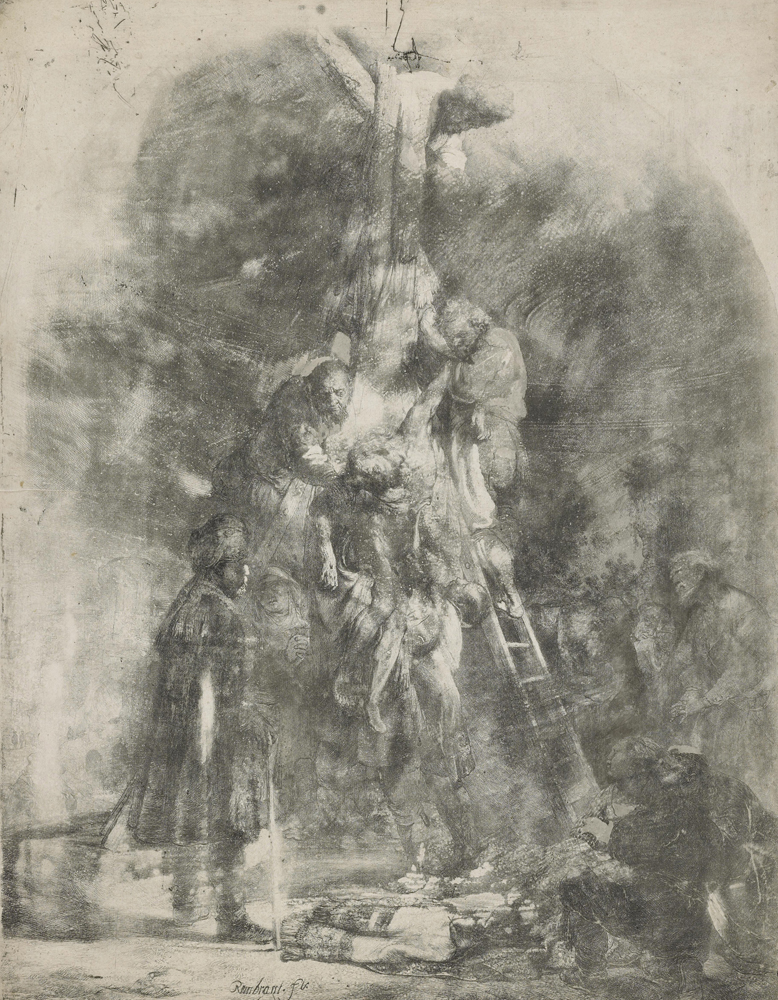
Rembrandt and Jan van Vliet, Descent from the Cross, 1633 (first plate) © British Museum, London
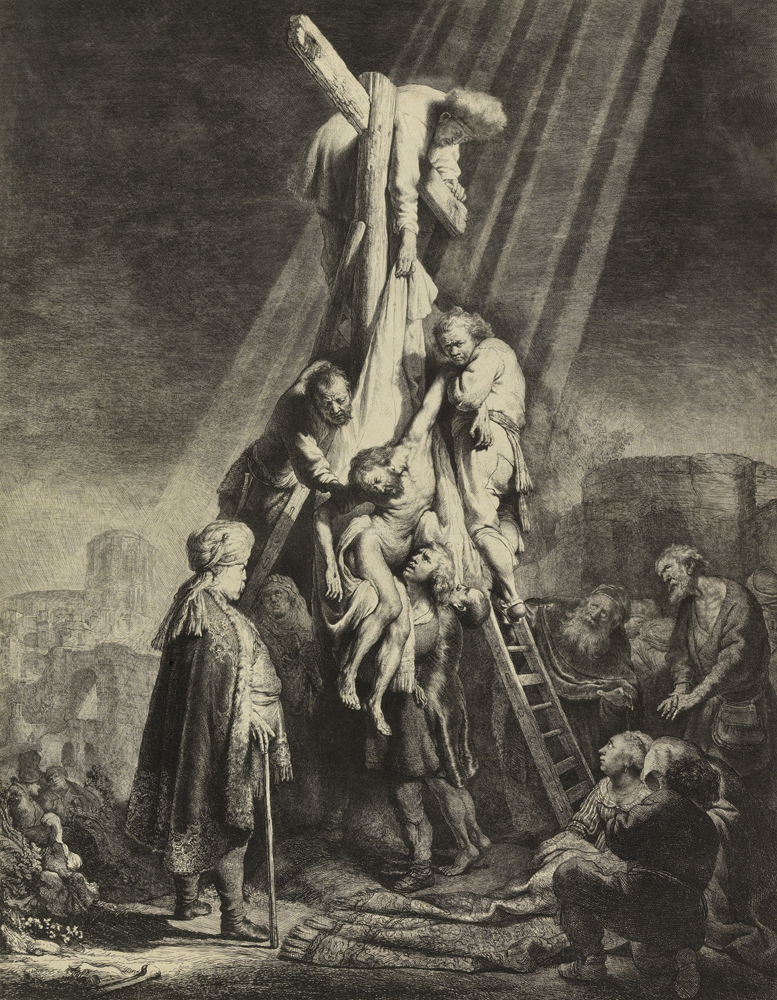
Rembrandt and Jan van Vliet, Descent from the Cross, 1633 (second plate) © Fitzwilliam Museum, University of Cambridge
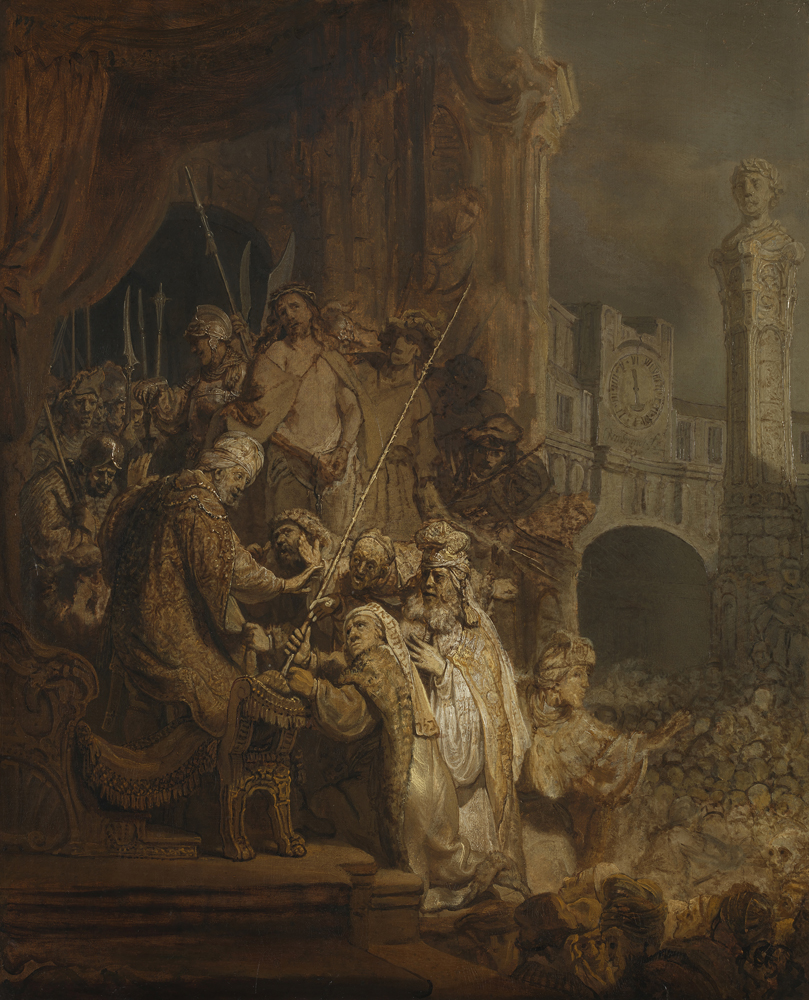
Rembrandt, Christ before Pilate, Ecce Homo, 1634 © National Gallery, London
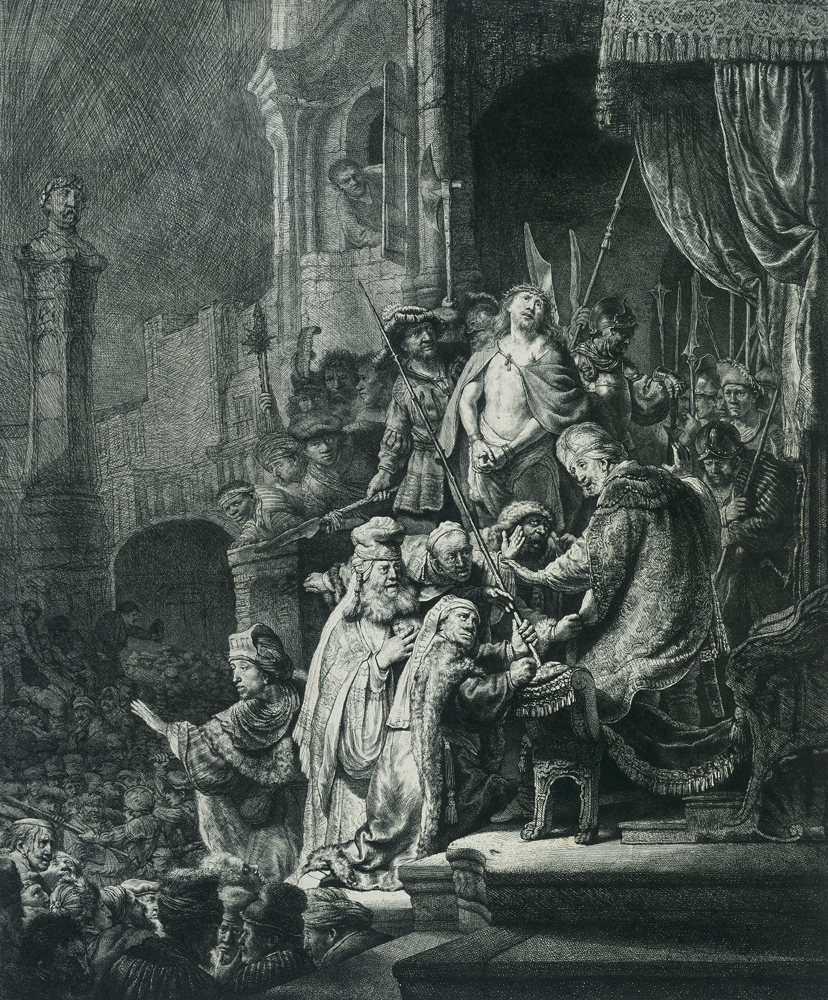
Rembrandt and Jan van Vliet, Christ before Pilate, Ecce Homo, 1635–6 © Fondation Custodia, Paris
INNOVATION
In addition to striving for recognition, Rembrandt also explored new and innovative subjects. Introducing earthy naturalism and occasionally explicit vulgarity, these works were eagerly acquired by a growing body of collectors. Whereas female nudes were traditionally idealised, Rembrandt depicted them as real women with big thighs, plump bellies and sagging flesh.
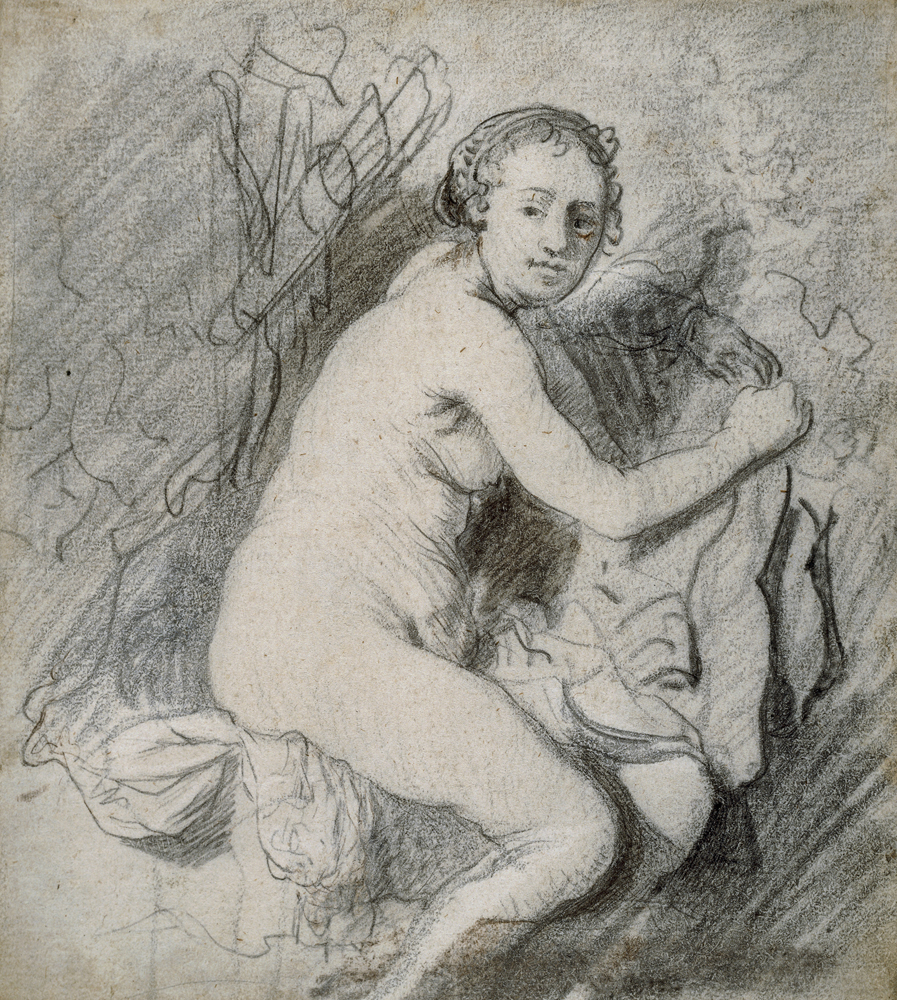
Rembrandt, Diana at the bath, c. 1630-1 © British Museum, London
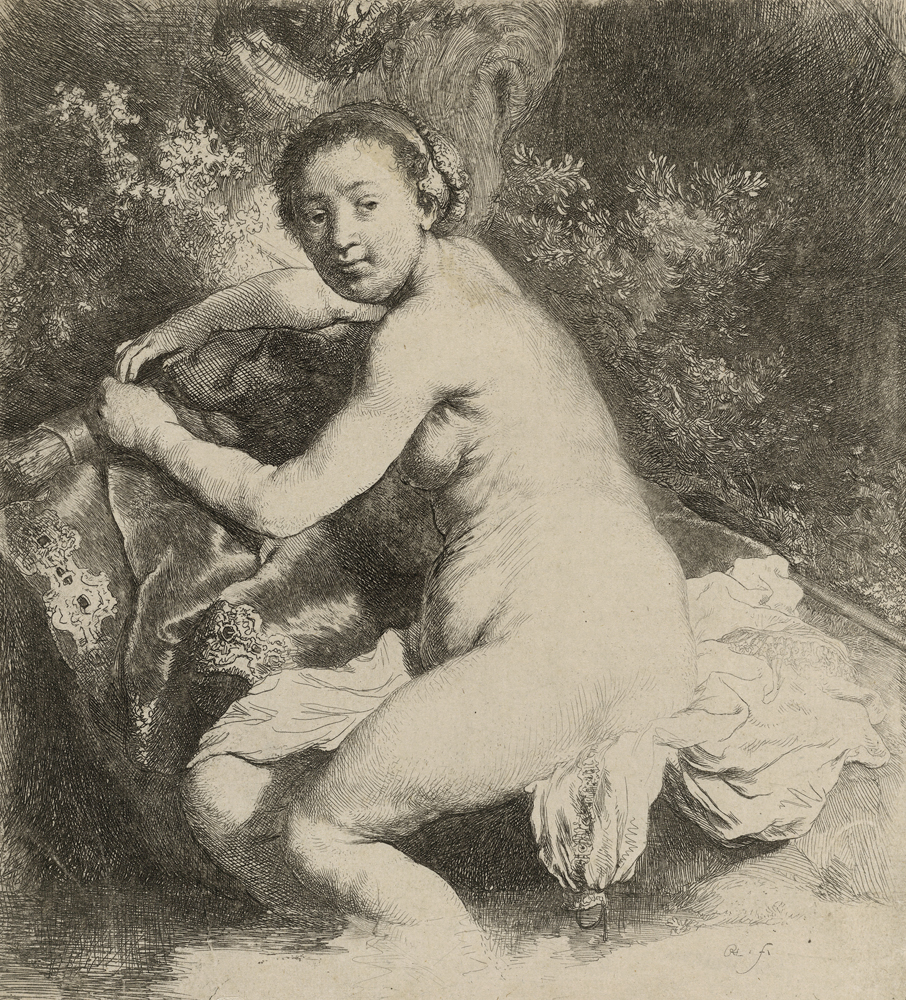
Rembrandt, Diana at the bath, c. 1631 © British Museum, London
Peasants and beggars were not only depicted loitering on the streets but were shown in the act of urinating or defecating. This provocative honesty and lack of idealisation became one of the hallmarks of Rembrandt’s work.
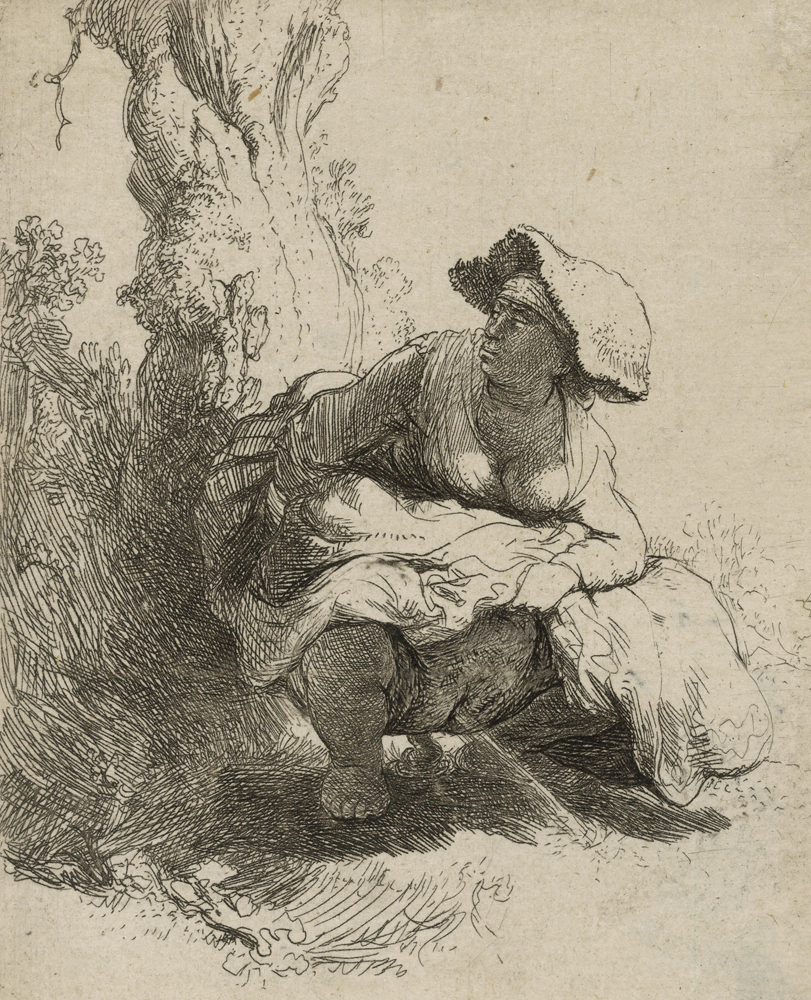
Rembrandt, A woman defecating, 1631 © British Museum, London
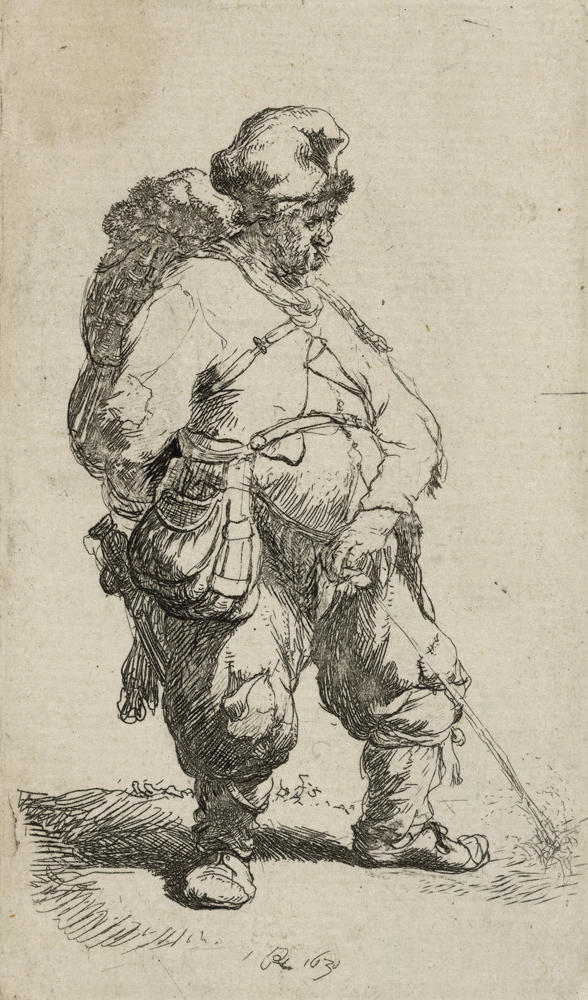
Rembrandt, A man urinating, 1631 © British Museum, London
OLD AGE
Rembrandt had always been fascinated with old age. He frequently depicted not only his parents - who were nearing their sixties and among his first models - but many other grey-haired men with long, flowing beards.
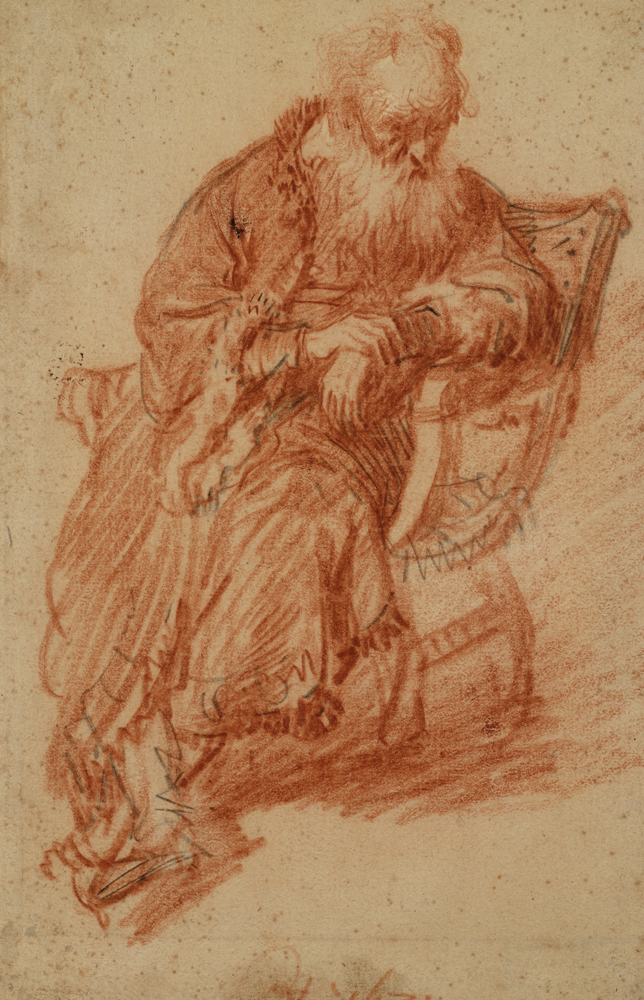
Rembrandt, Old man seated in an armchair, 1631 © Teylers Museum, Haarlem
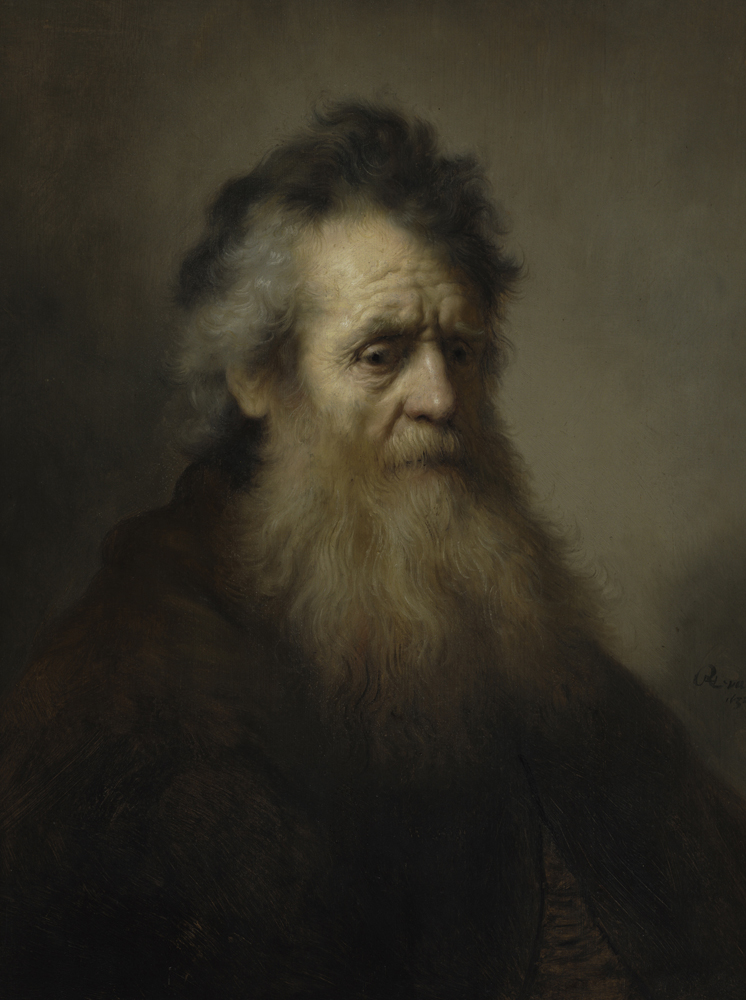
Rembrandt, Bearded Old Man, 1632 © Fogg Museum, Harvard Art Museums, Cambridge, MA
These cannot be identified but were possibly family friends or acquaintances from Leiden and Amsterdam. Their heavily lined faces and bony hands were depicted by Rembrandt with tremendous care and delicacy, suggesting a deep respect and sympathy. Appearing in single figure studies or in the guise of elderly characters from history or the Bible, these men reappear in various works throughout this exhibition.
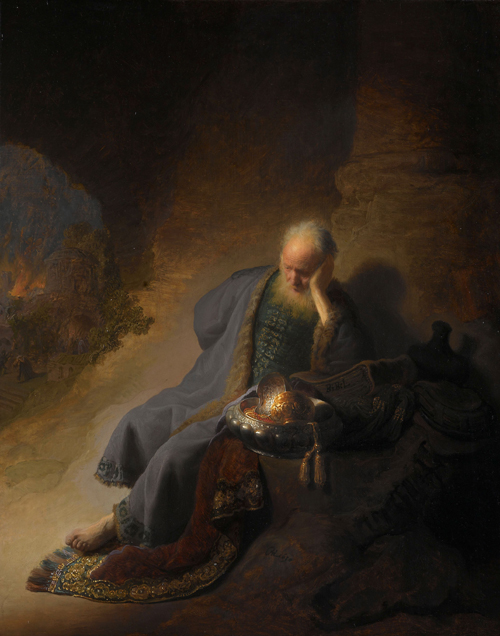
Rembrandt, Jeremiah Lamenting the Destruction of Jerusalem, 1630 © Rijksmuseum, Amsterdam
ESTABLISHING THE REMBRANDT STYLE
Gerrit Dou after Rembrandt, Portrait of Rembrandt with a Gorget, c. 1630
© Mauritshuis, The Hague
Rembrandt moved to Amsterdam in 1631. By this time he had established his distinctive style to such an extent that his art could no longer be confused with Lievens or anyone else. With an increasingly willing market for his work he further explored the elements that made up his signature style. His fascination with dramatic contrasts of light and dark played out brilliantly in his nocturnal scenes, atmospheric interiors and portraits.
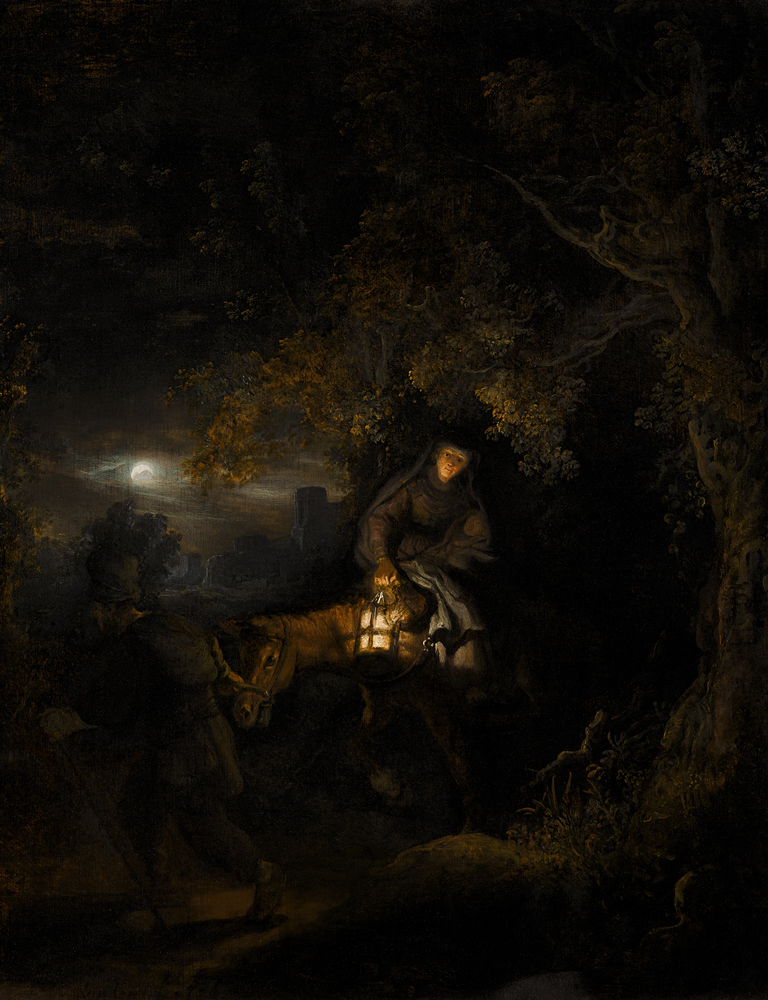
Rembrandt, The Flight into Egypt, 1634 © Private Collection
His ability to suggest psychological narratives through facial expression and gesture – whether quiet introspection or outward turmoil – continued to be developed through his many self-portraits, intimate portrayals of family members and character studies.
REMBRANDT AS A TEACHER
From as early as 1628, only a few years after he became an independent artist himself, Rembrandt took on pupils. Apart from providing Rembrandt with a steady income, these apprentices were also employed to produce the countless copies and versions of Rembrandt’s paintings which left the workshop. While this was good practice for young artists, these studio pictures also provided Rembrandt with additional works to sell and further helped to promote the Rembrandt style.
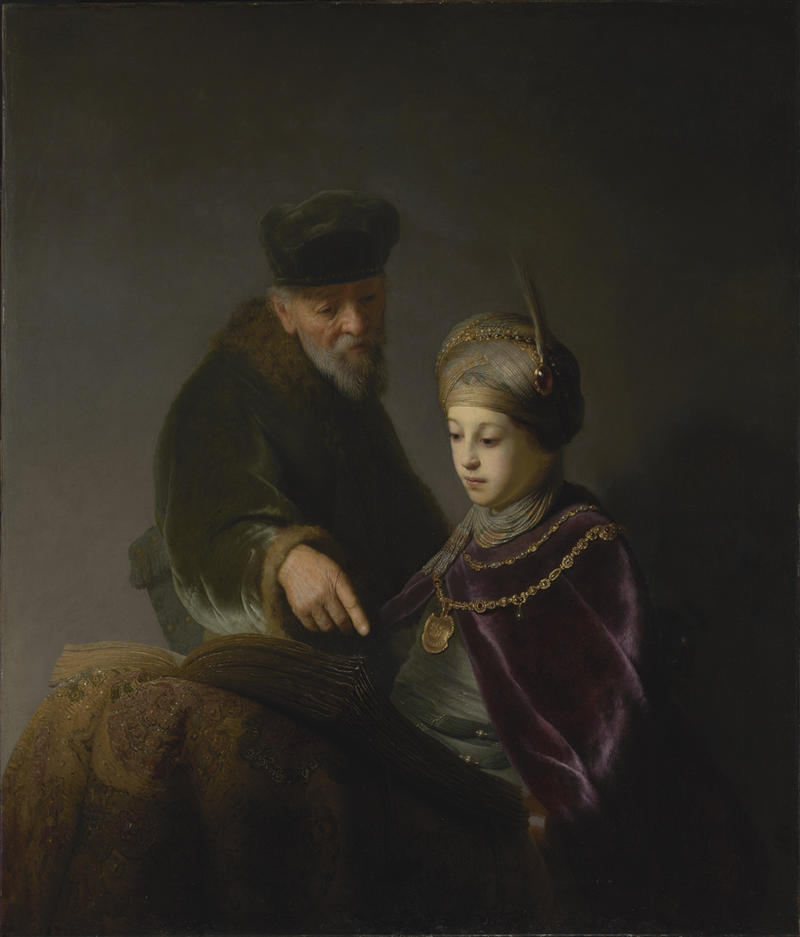
Rembrandt and Gerrit Dou, A Young Scholar and his Tutor, c. 1631 © J Paul Getty Museum, Los Angeles
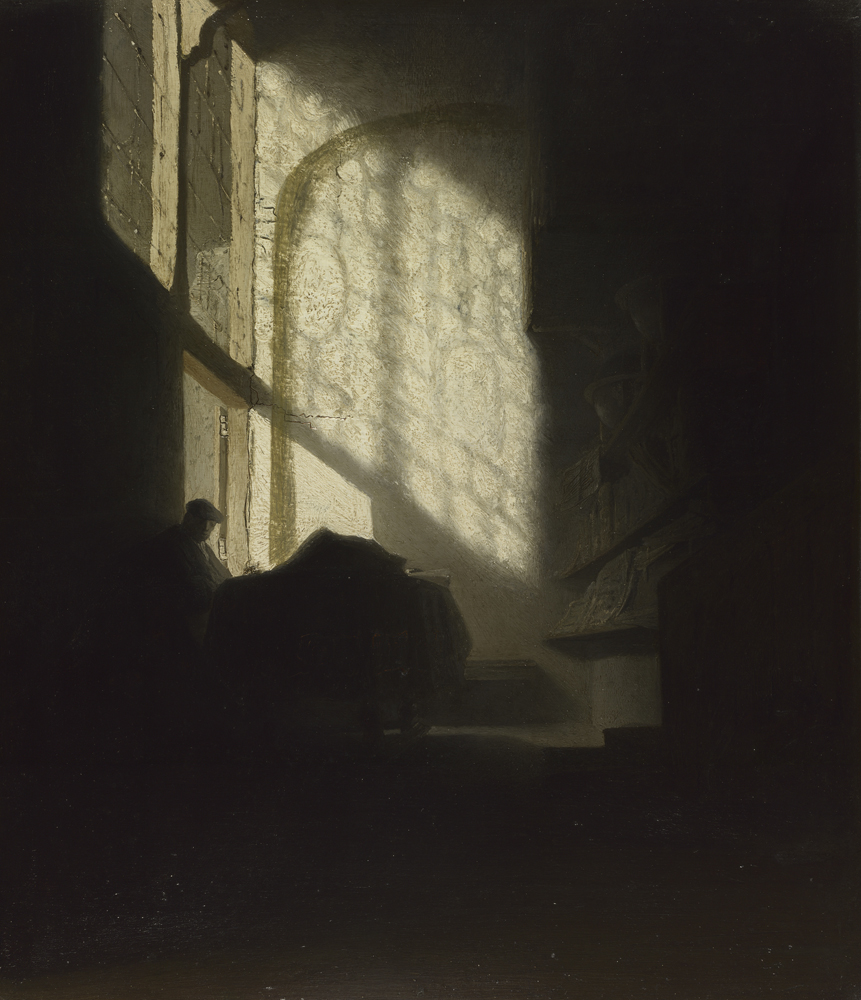
Follower of Rembrandt, A man seated reading at a table in a lofty room, c. 1628-30 © National Gallery, London
REMBRANDT IN AMSTERDAM
Rembrandt, Self-Portrait with Beret and Golden Chain, 1633
© Musée du Louvre, Paris
At the end of 1631, Rembrandt began to collaborate with the art dealer Hendrick van Uylenburgh. He provided Rembrandt with a studio space in his established workshop and brokered portrait commissions from Amsterdam’s expanding class of wealthy merchants
and bankers. Within a short time Rembrandt transformed himself into one of the city’s most sought-after portraitists. He nevertheless kept the Leiden workshop going, only closing it in 1634, once he was fully assured of success in his new home. In
Amsterdam Rembrandt also met his future wife, Saskia, a cousin of Van Uylenburgh. She began appearing in Rembrandt’s works from 1633 onwards, creating a youthful contrast to the artist’s many depictions of elderly men and women.
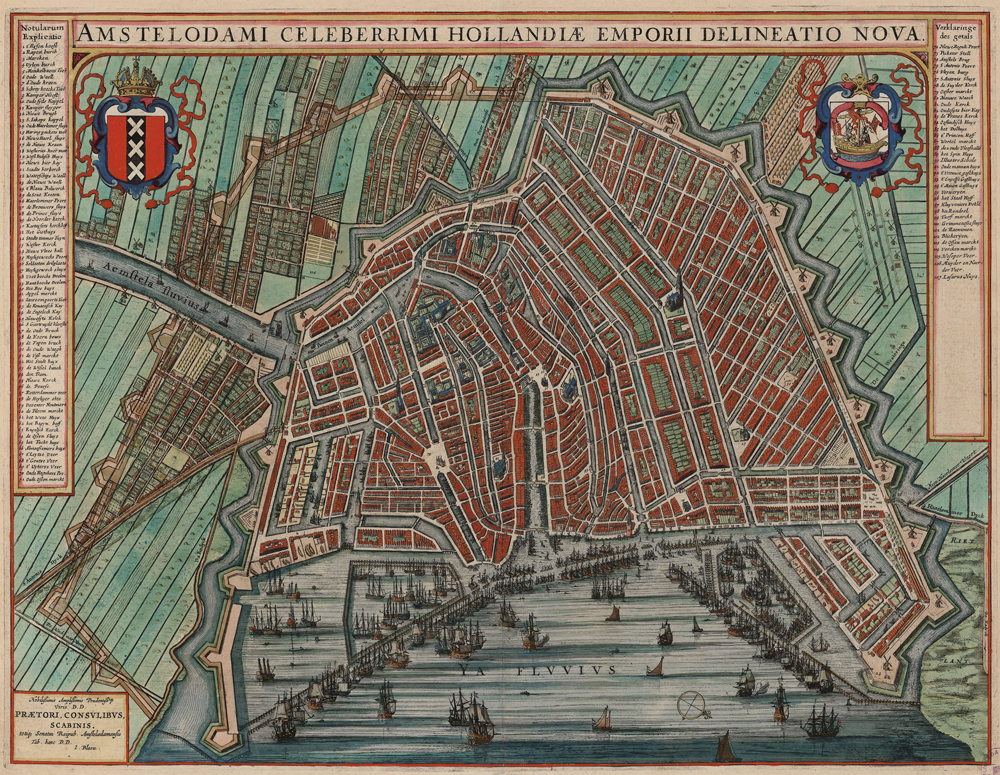
Map of Amsterdam adapted from Joan Blaeu, 1649
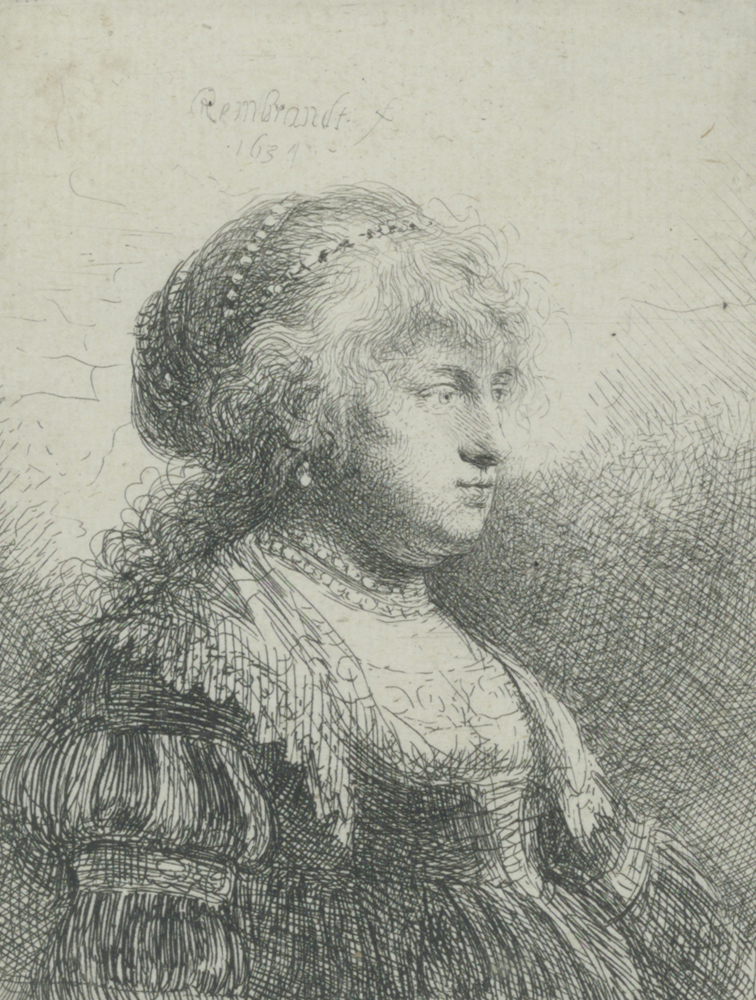
Rembrandt, Saskia with pearls in her hair, 1634 © Fondation Custodia, Collection Frits Lugt, Paris
THE IMAGINED EAST
Rembrandt was intrigued by costumes and cultures he considered exotic, such as those of Turkey and India. He was probably encouraged by the international trade and import of exotic goods which he witnessed in the port of Amsterdam. He collected clothing and numerous accessories such as turbans, scarves and armour, which served as studio props and featured heavily in his works.
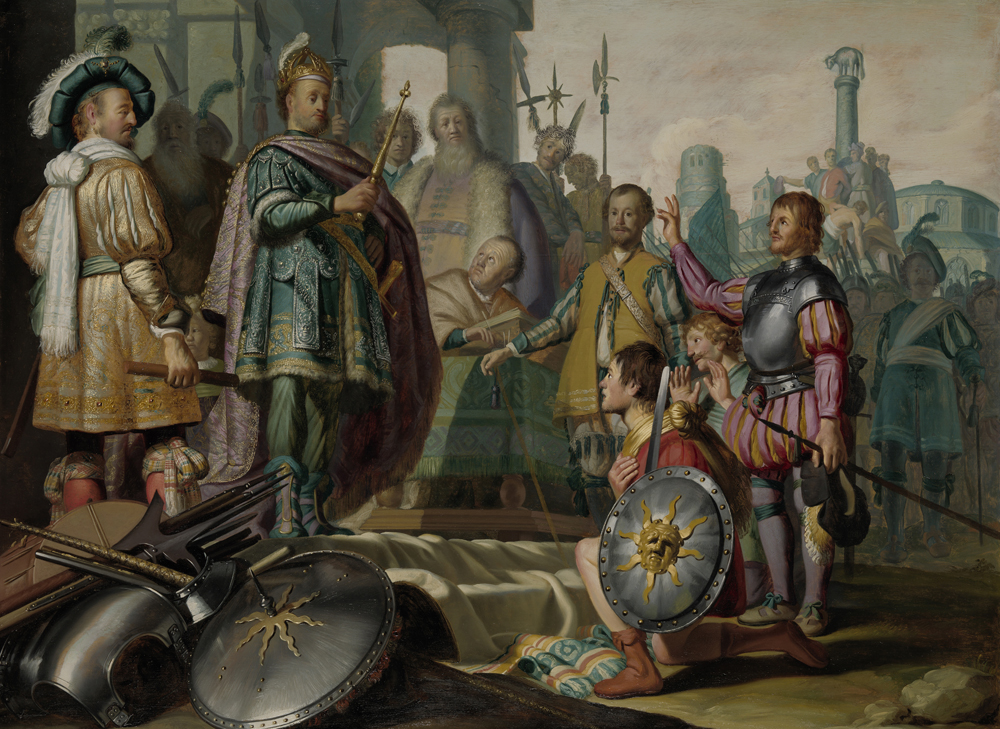
Rembrandt, History Painting, 1626 © Museum de Lakenhal, Leiden
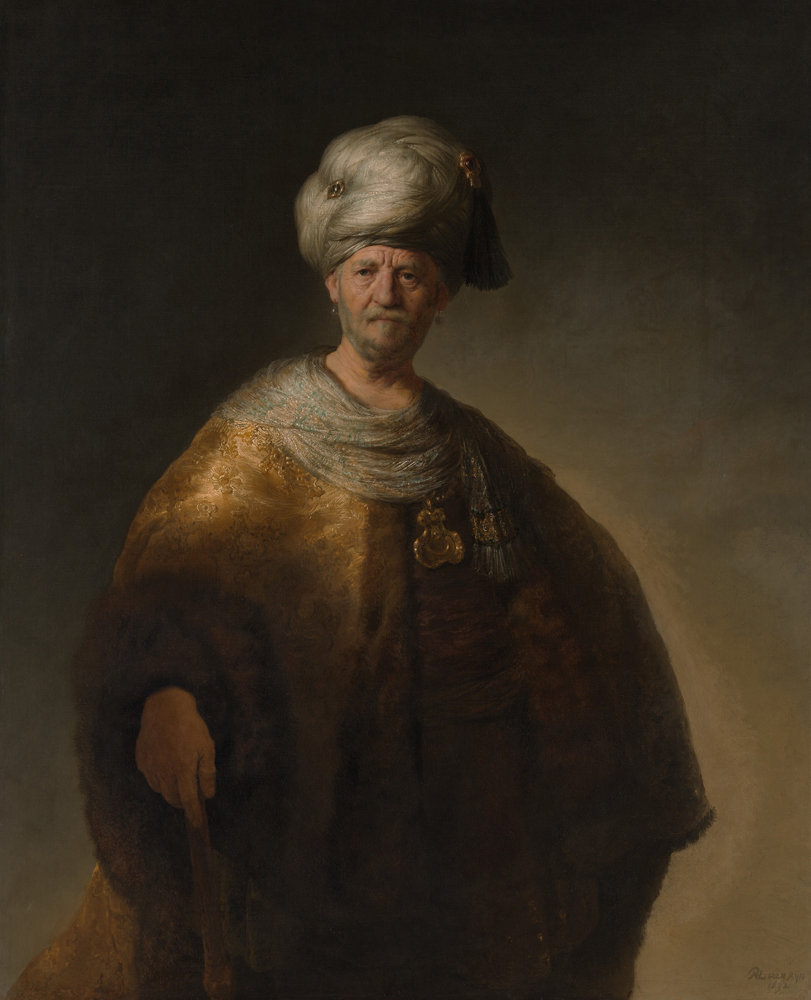
Rembrandt, "The Noble Slav", 1632 © Metropolitan Museum of Art, New York
The extent to which Rembrandt’s fascination was also a fantasy can best be seen in the paintings and prints in which he depicts himself in vaguely Middle Eastern or Asian garments, striking poses suggestive of status and power.
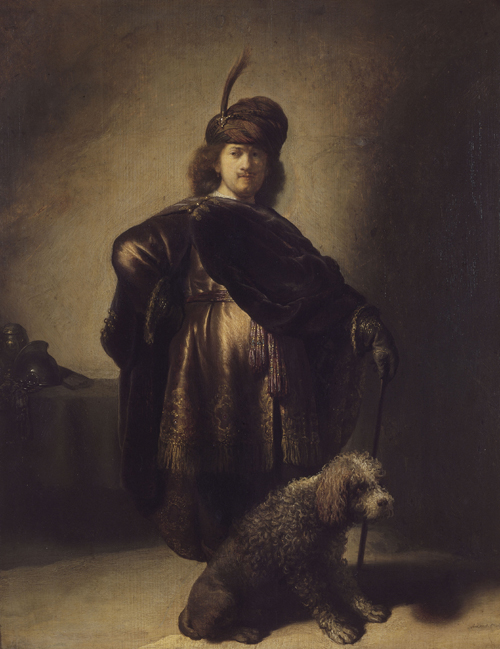
Rembrandt, Self-Portrait in Costume with a Poodle, 1631 © Musée du Petit Palais, Paris
AMSTERDAM PORTRAITS
The portraits made in Rembrandt’s first years in Amsterdam rank amongst the most sensitive and closely observed of his career. In each we gain a keen sense of the individual’s personality and presence. His control of light evokes a powerful sense of atmosphere. At the time, Amsterdam was enjoying a great surge in fortune and Rembrandt’s close attention to the details and textures of his sitter’s expensive clothes must have been greatly appreciated.
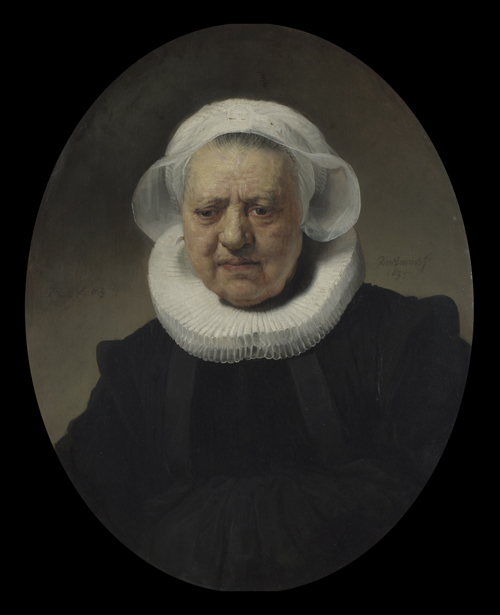
Rembrandt, Portrait of Aechje Claesdr, 1634 © National Gallery, London
★ ★ ★ ★
“A rare opportunity to witness a great artist in the making”
The Telegraph
"Packed with both unfamiliar curiosities and rarely loaned glories"
The Financial Times
★ ★ ★ ★
“Revelatory – from the shadows of that first tentative self-portrait the splendours of one of our greatest masters emerge”
The Times
EXHIBITION CATALOGUE
With descriptions and images of all of the works on display, as well as essays on the themes explored, this is the perfect exhibition companion.
BUY ONLINE
SUPPORTERS & CURATORS
The exhibition has been generously supported by
The William Delafield Charitable Trust
The Friends of the Ashmolean
The Patrons of the Ashmolean
Edward Speelman Ltd
Sotheby’s
Charles and Alison Young
Ambassador J. William Middendorf II
The Catherine Lewis Foundation
Susan and Matthew Weatherbie
Embassy of the Kingdom of the Netherlands
Thriplow Charitable Trust
The Michael Marks Charitable Trust
Exhibition Curators
Professor Christopher Brown CBE, Director-Emeritus of the Ashmolean Museum
An Van Camp, Curator of Northern European Art, Ashmolean Museum
Dr Christiaan Vogelaar, Curator of Old Master Paintings and Sculpture, Museum De Lakenhal



